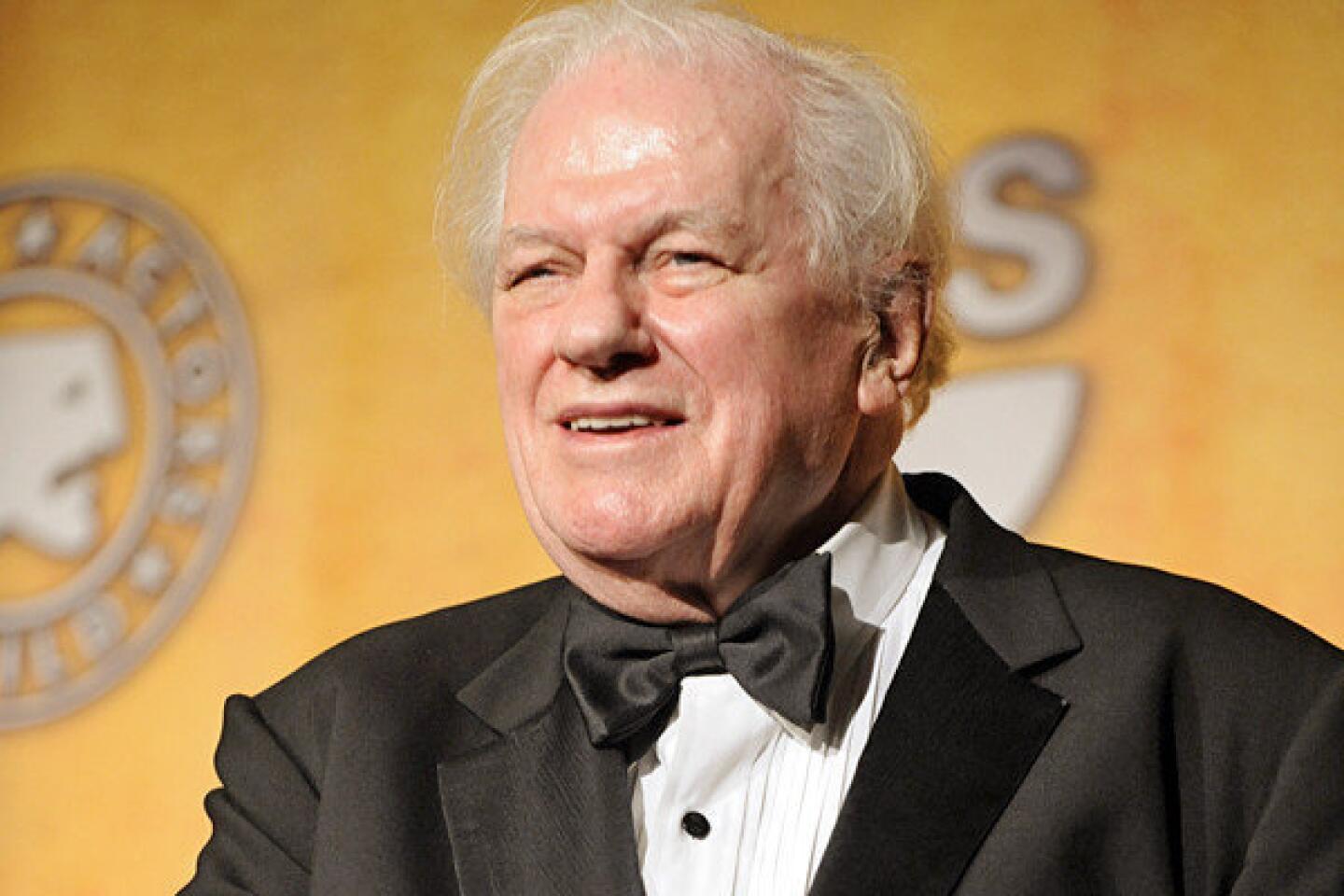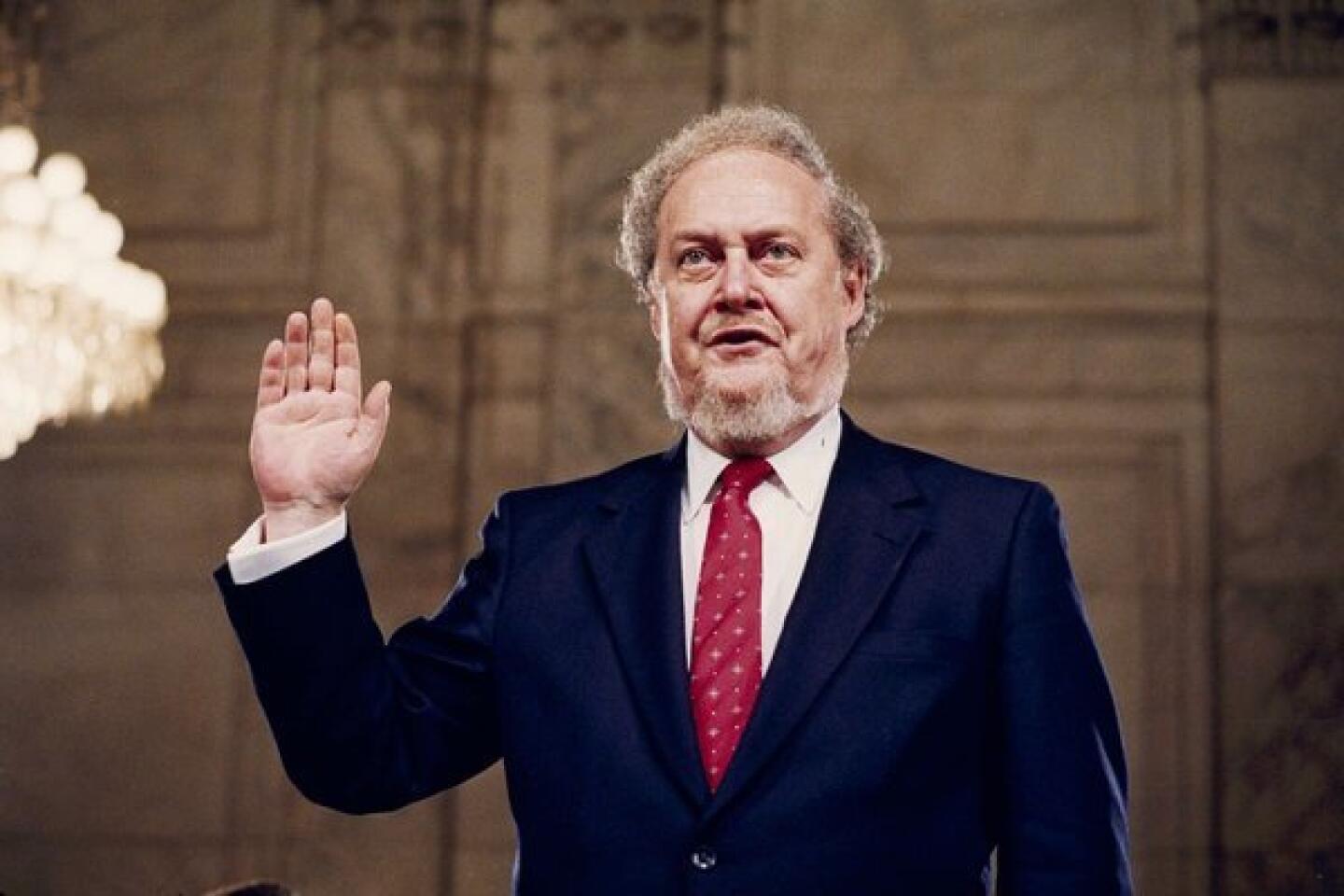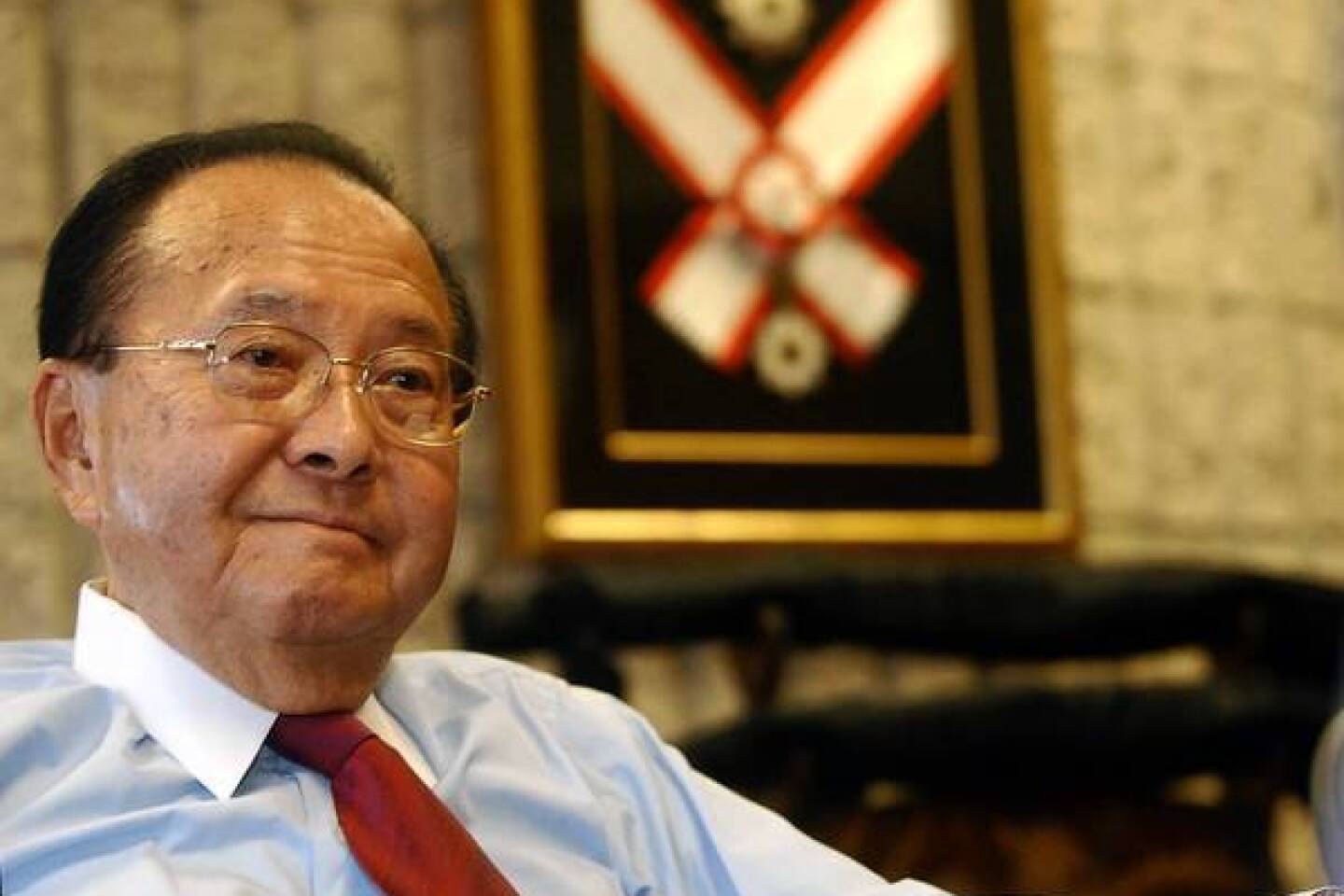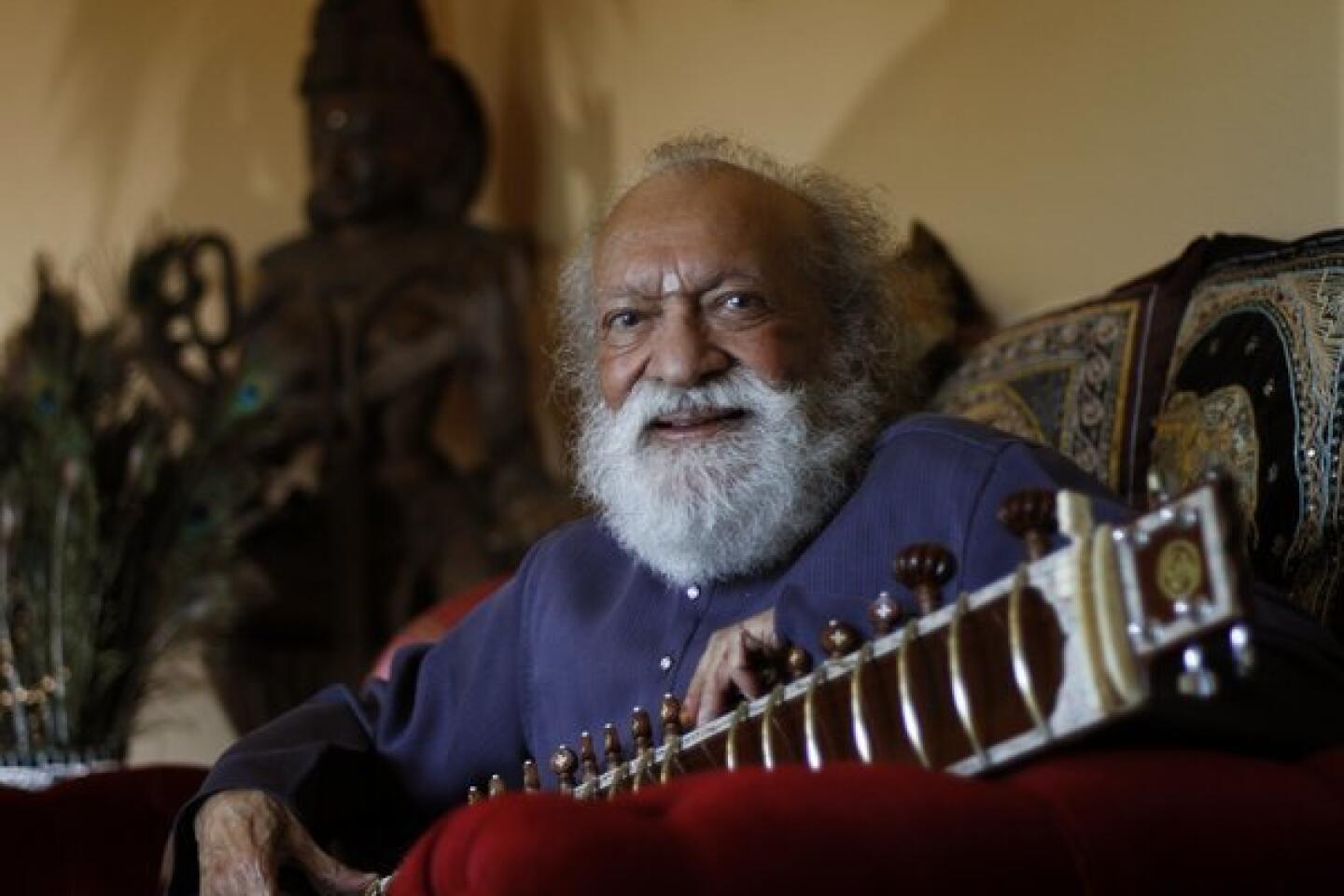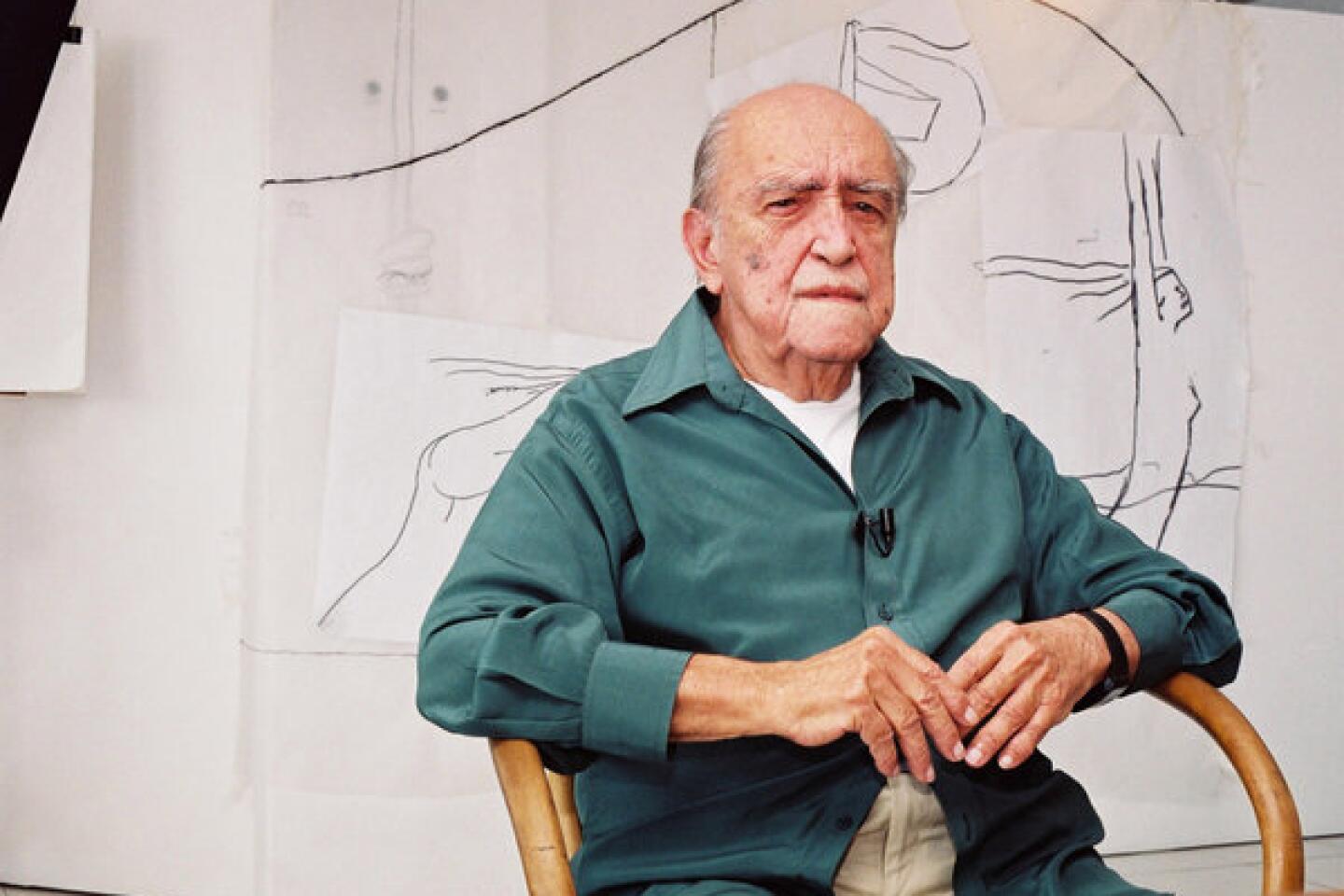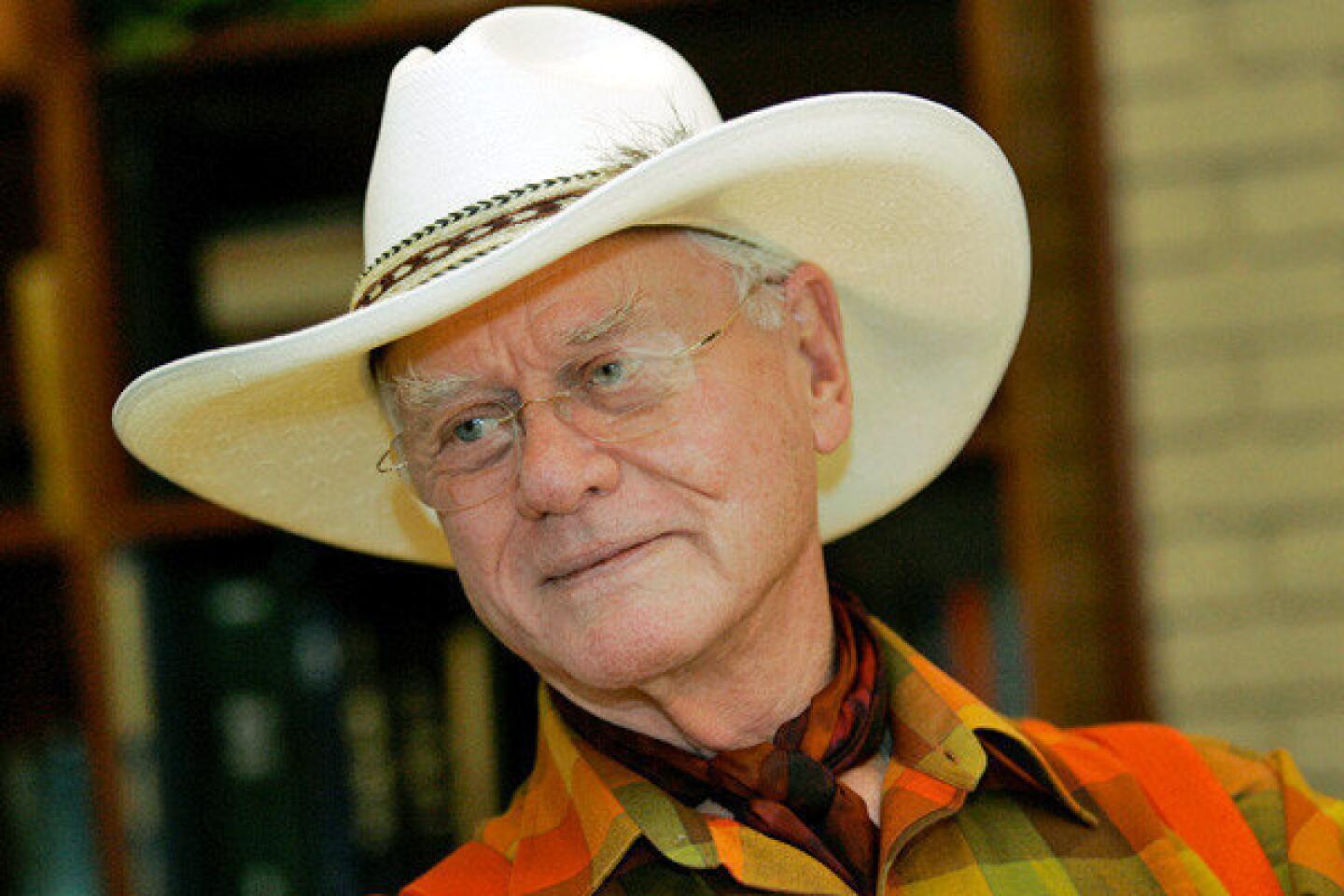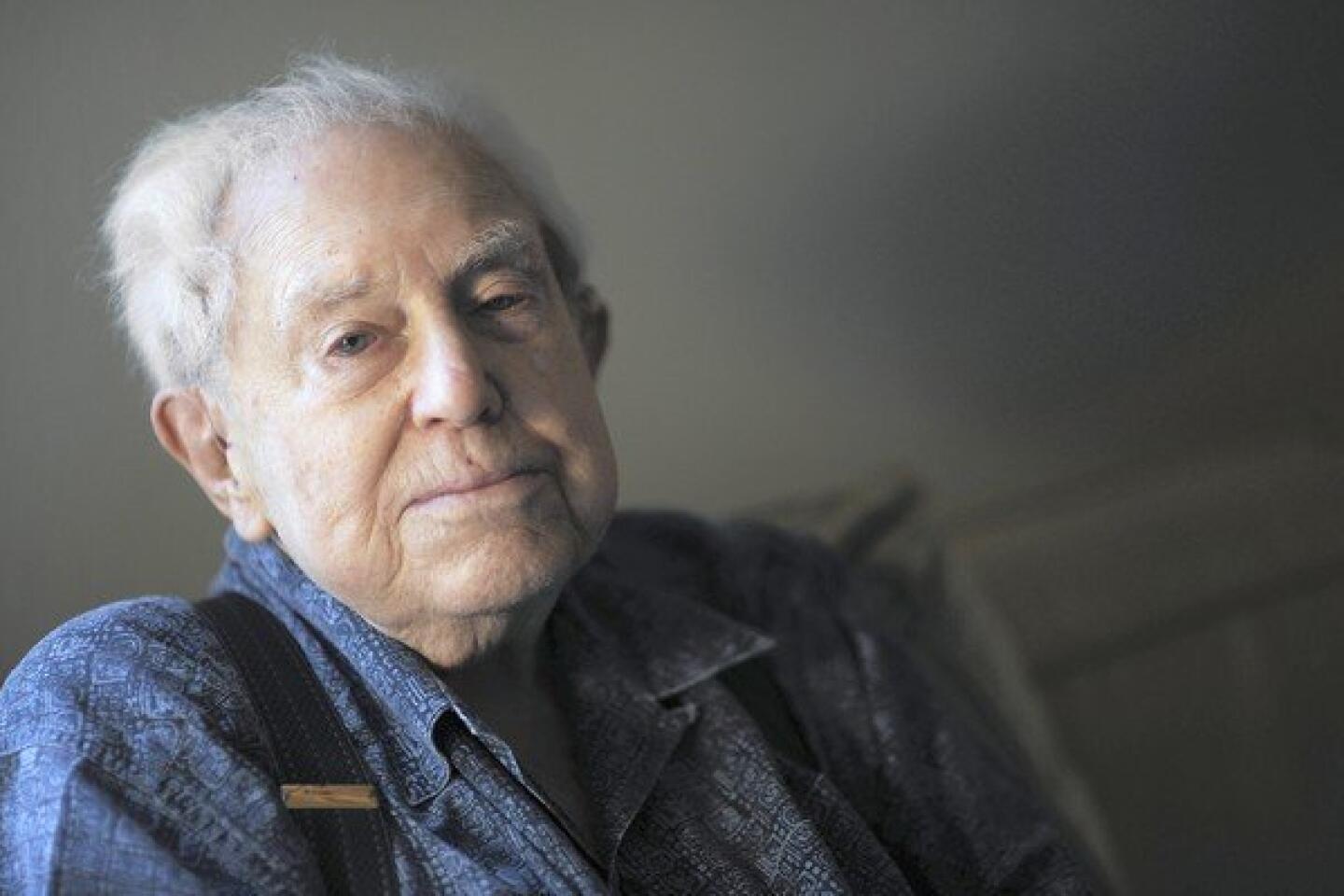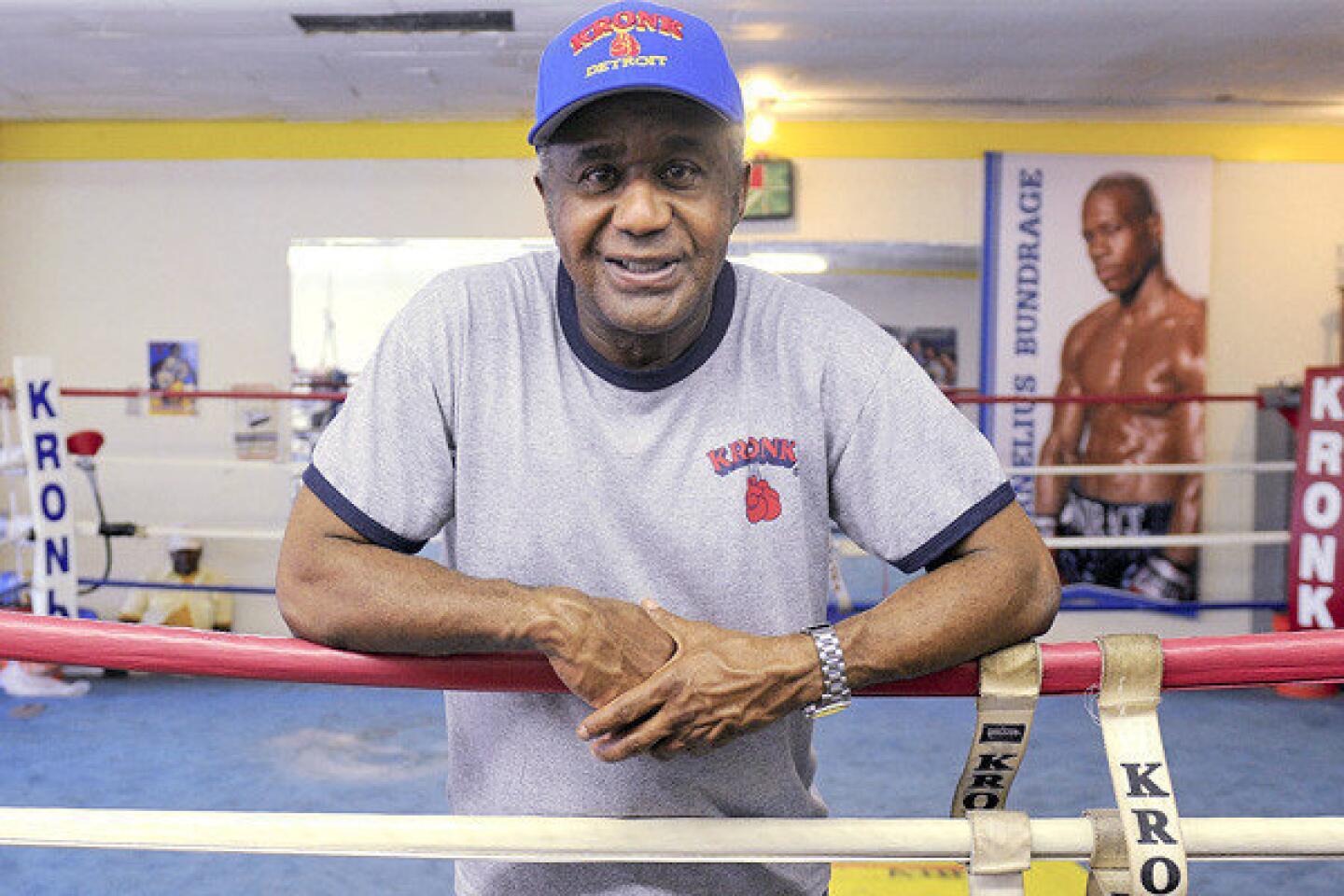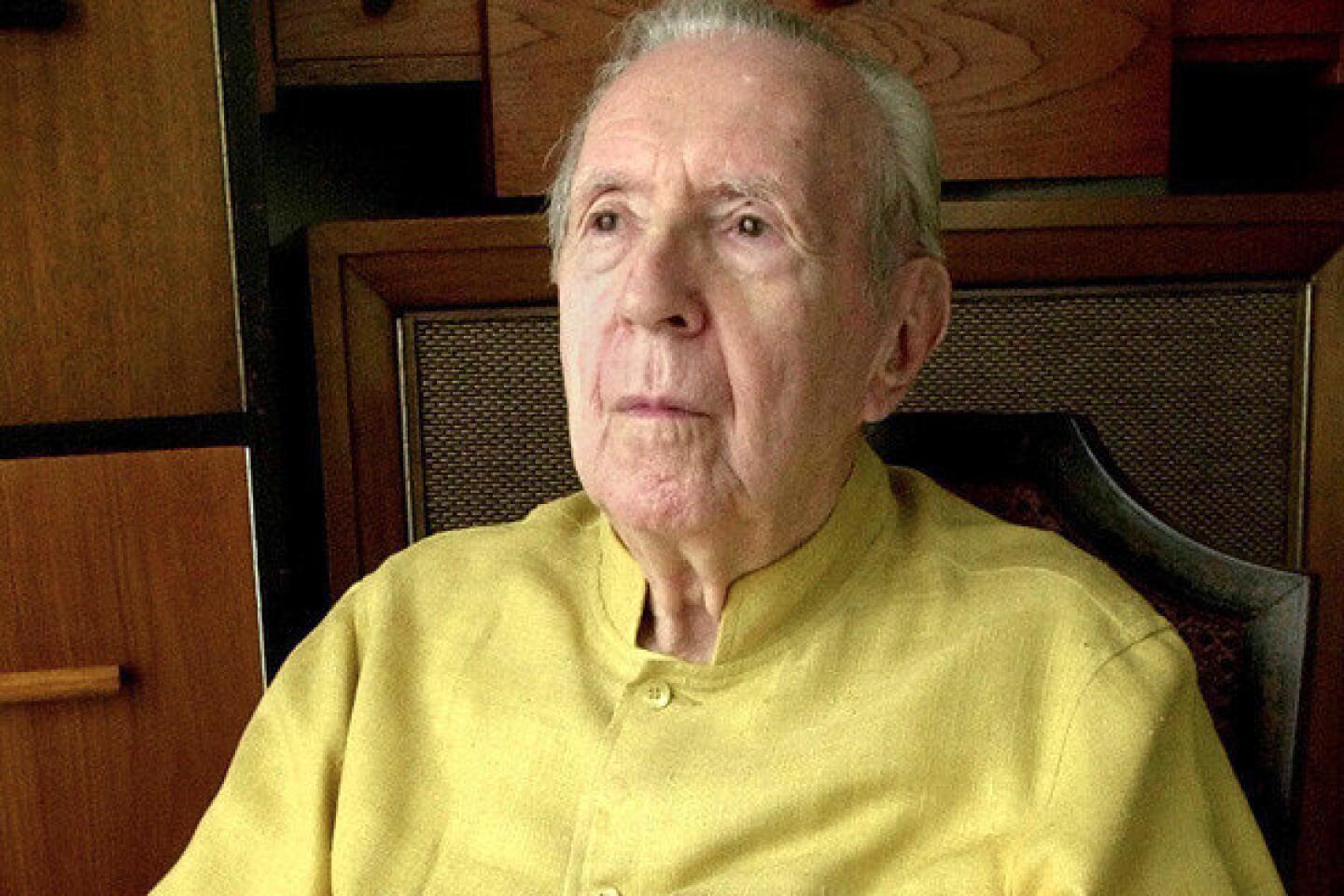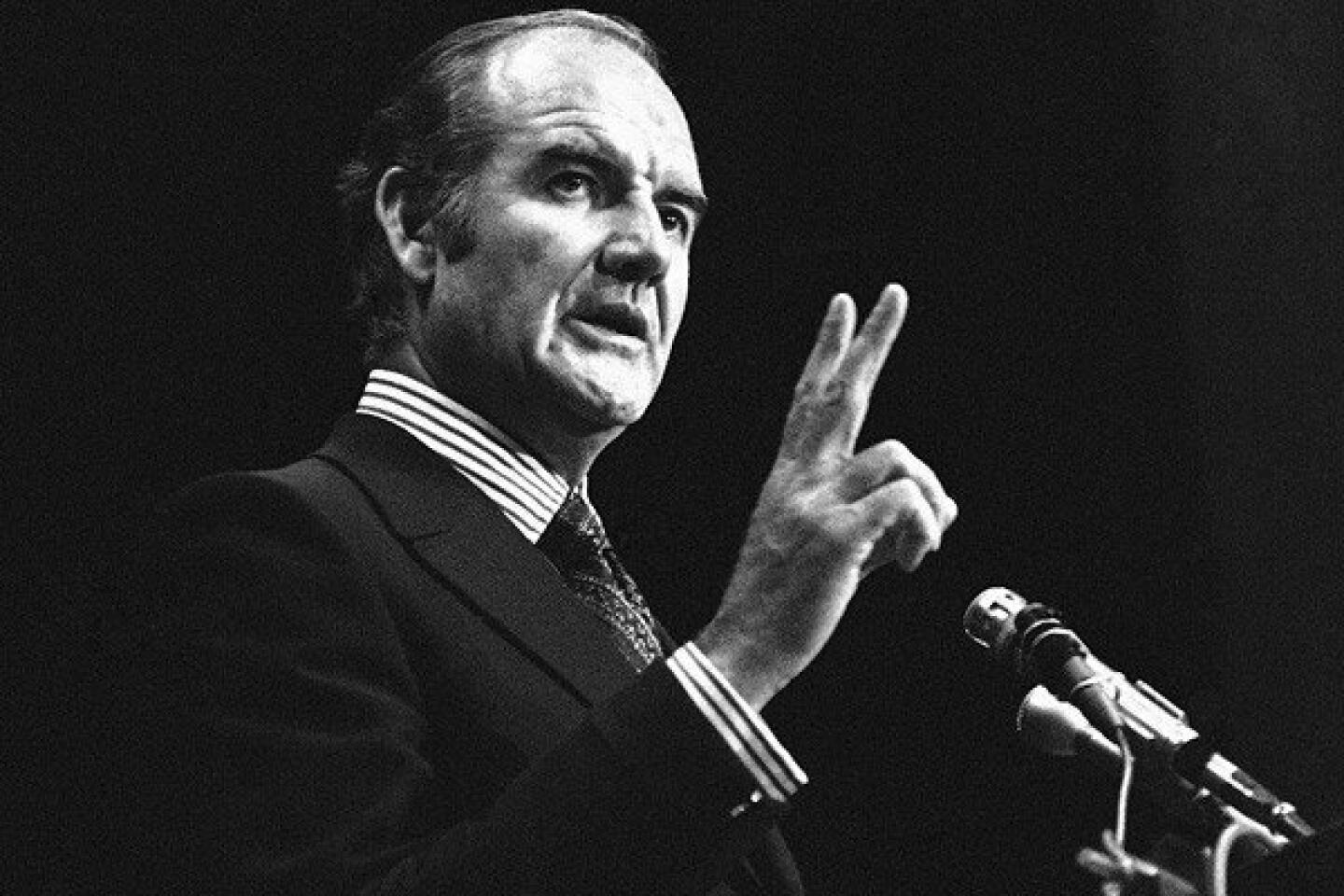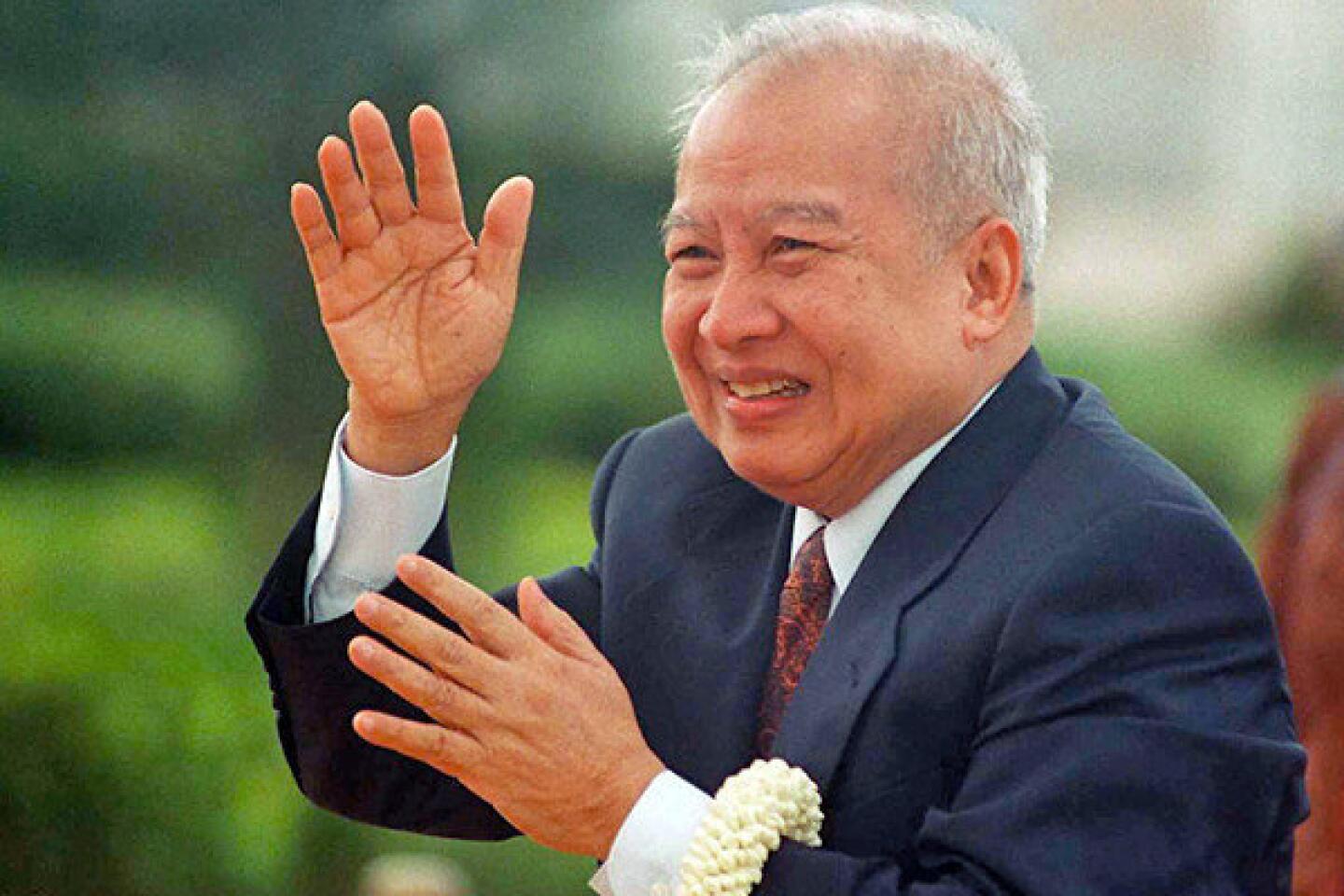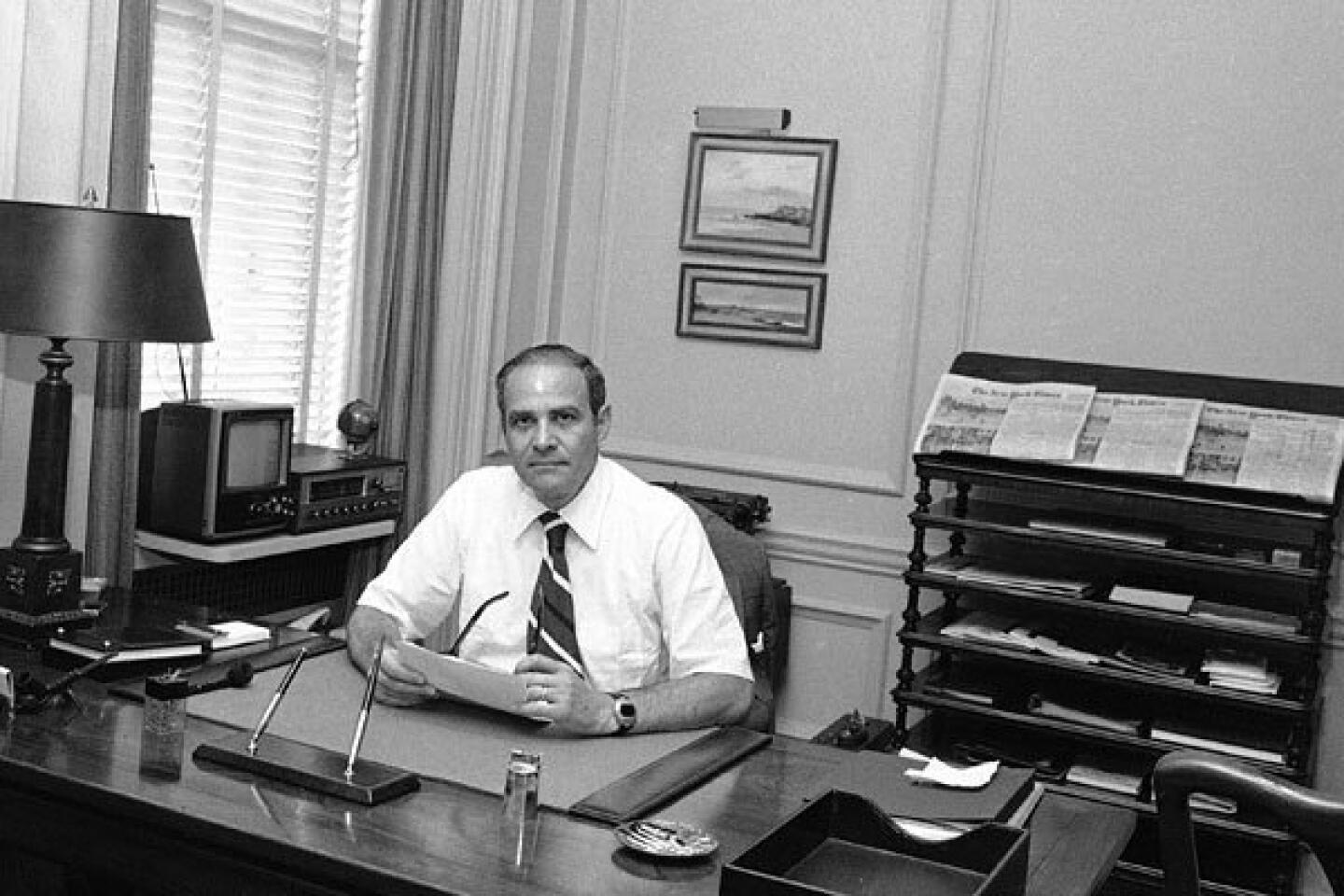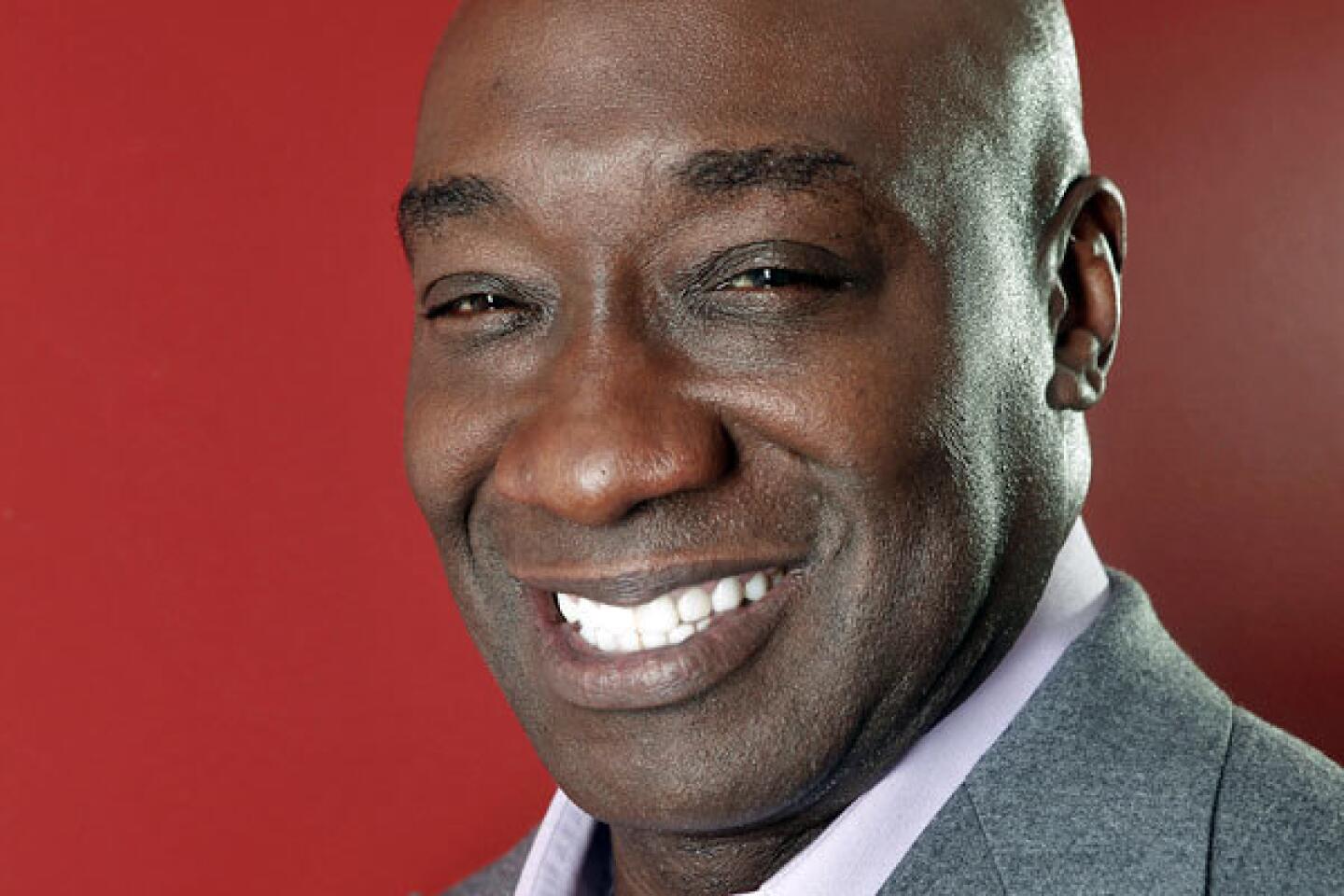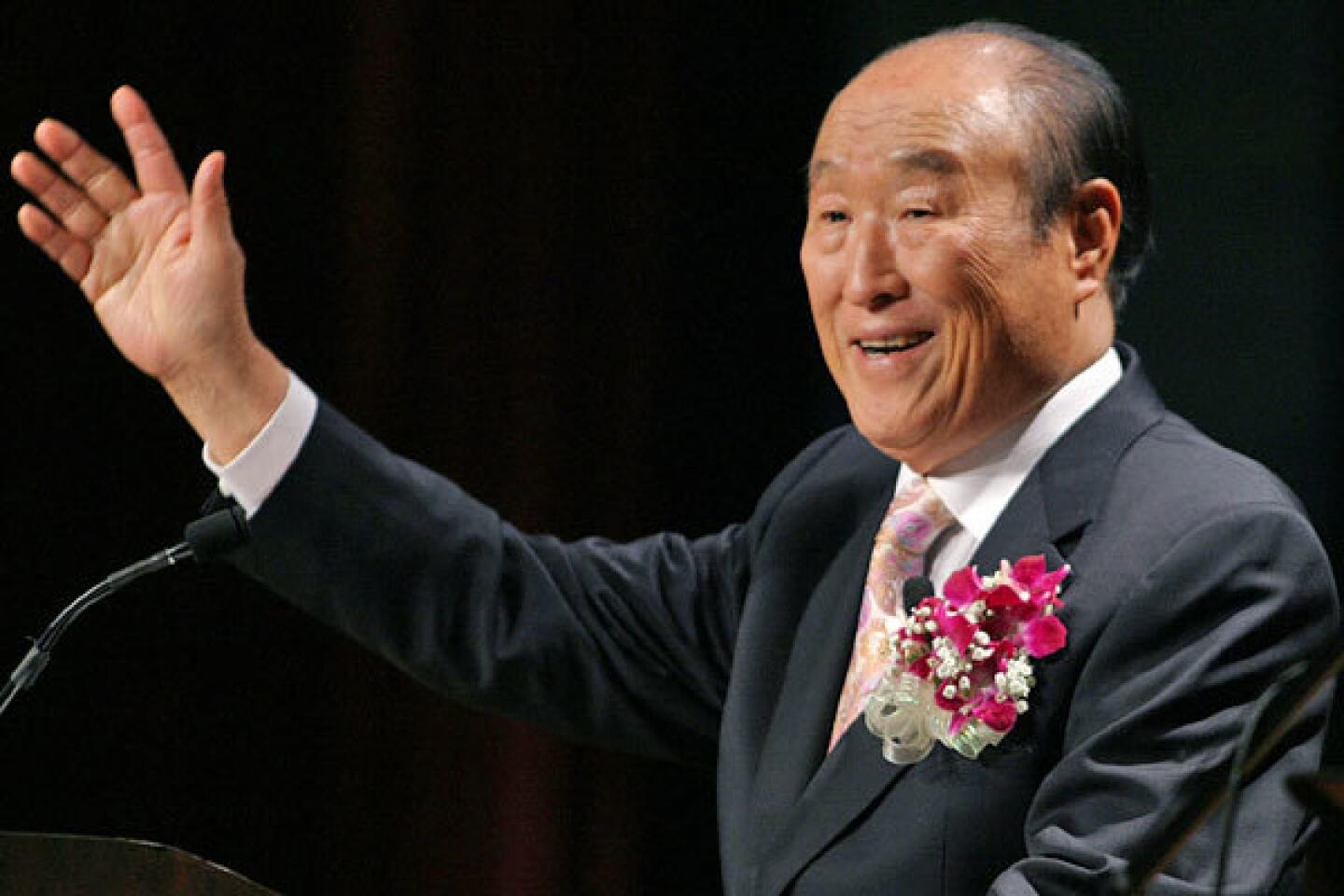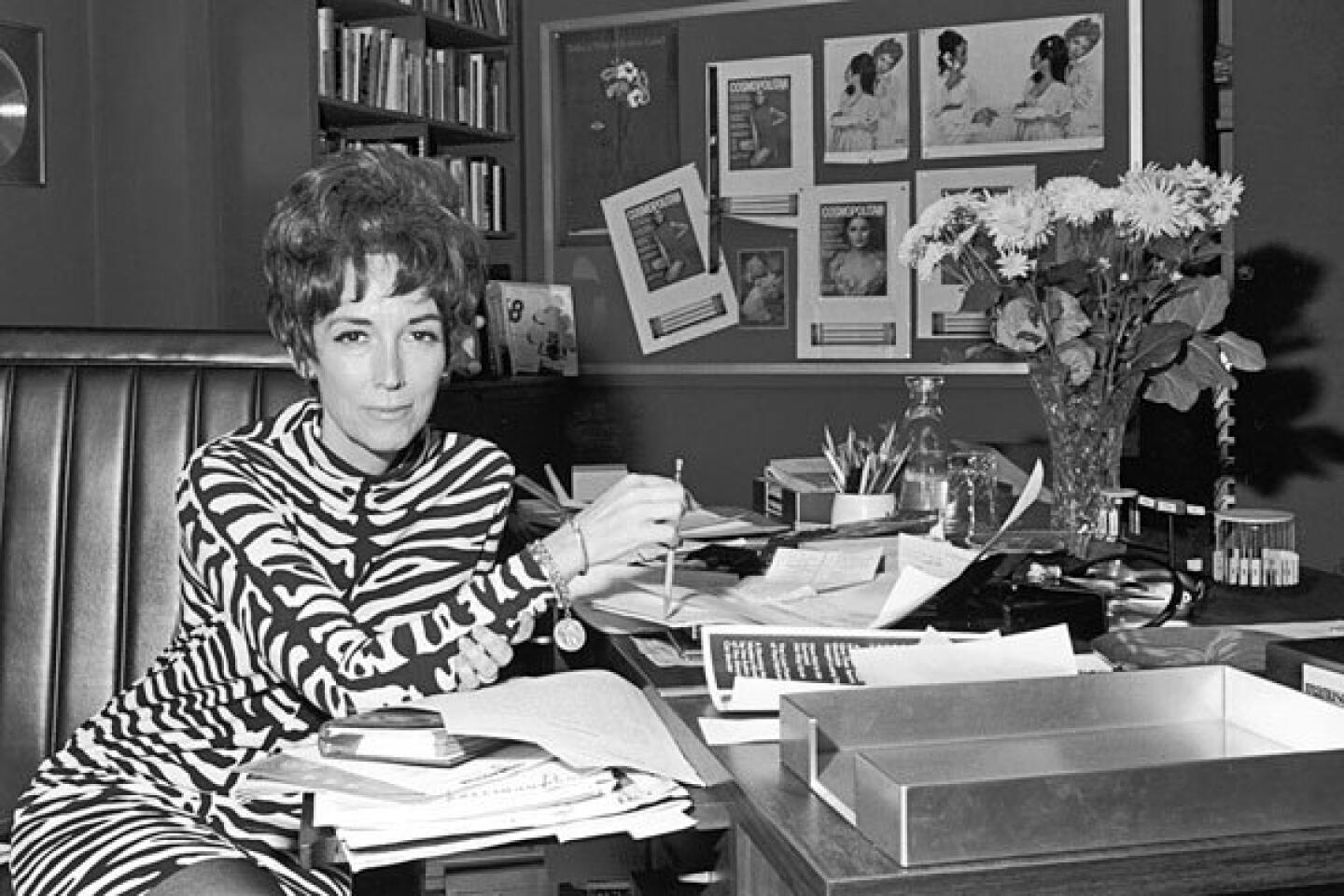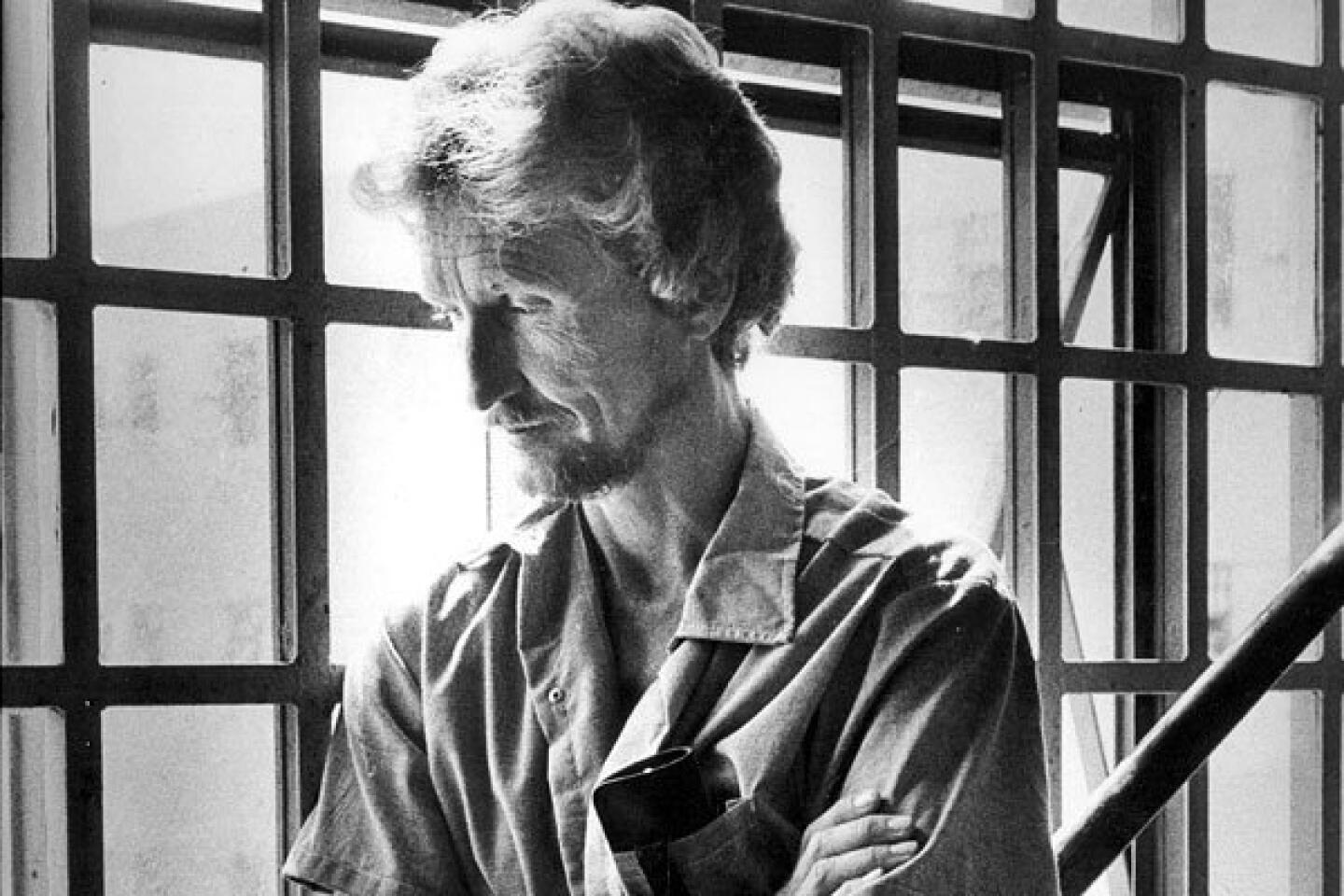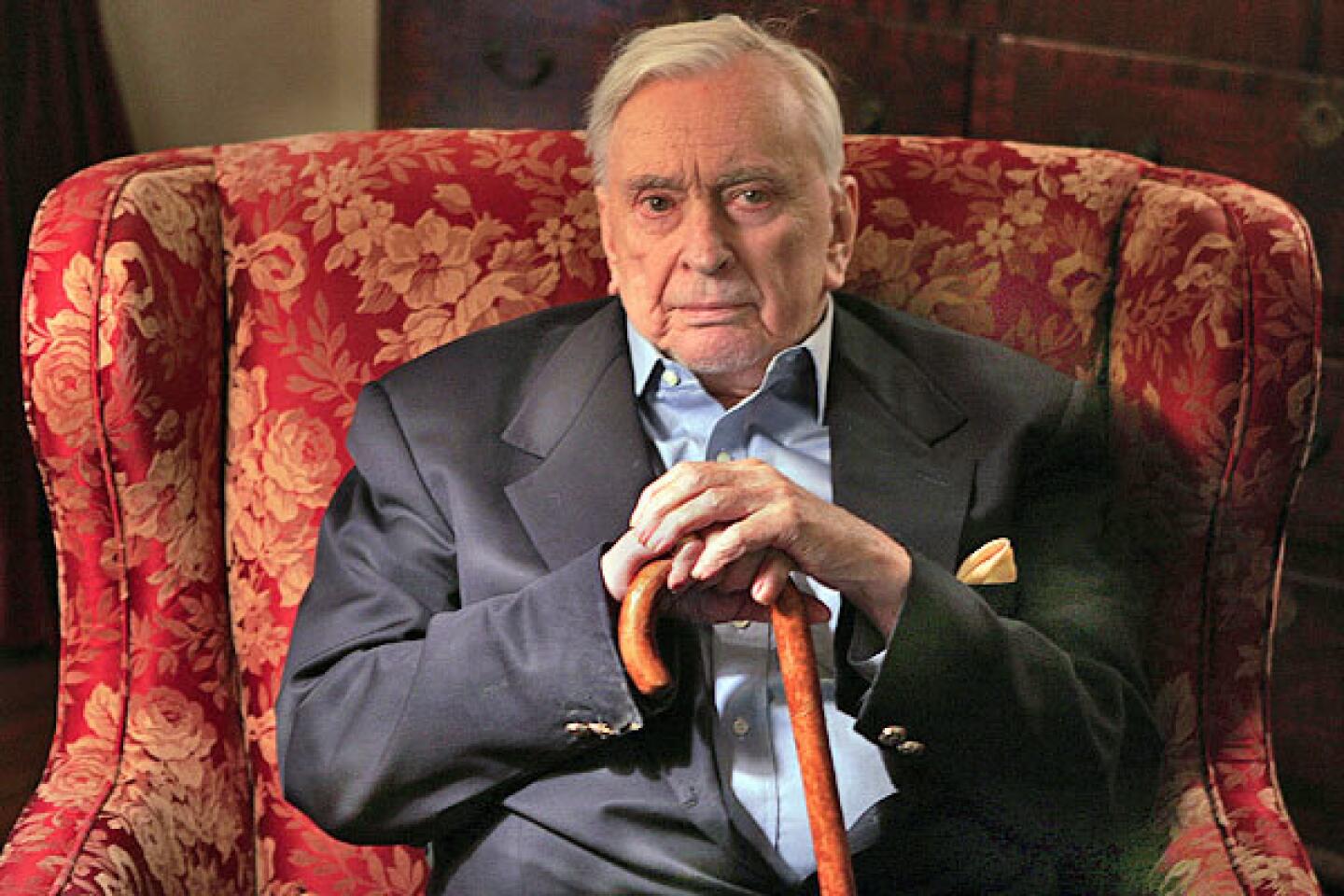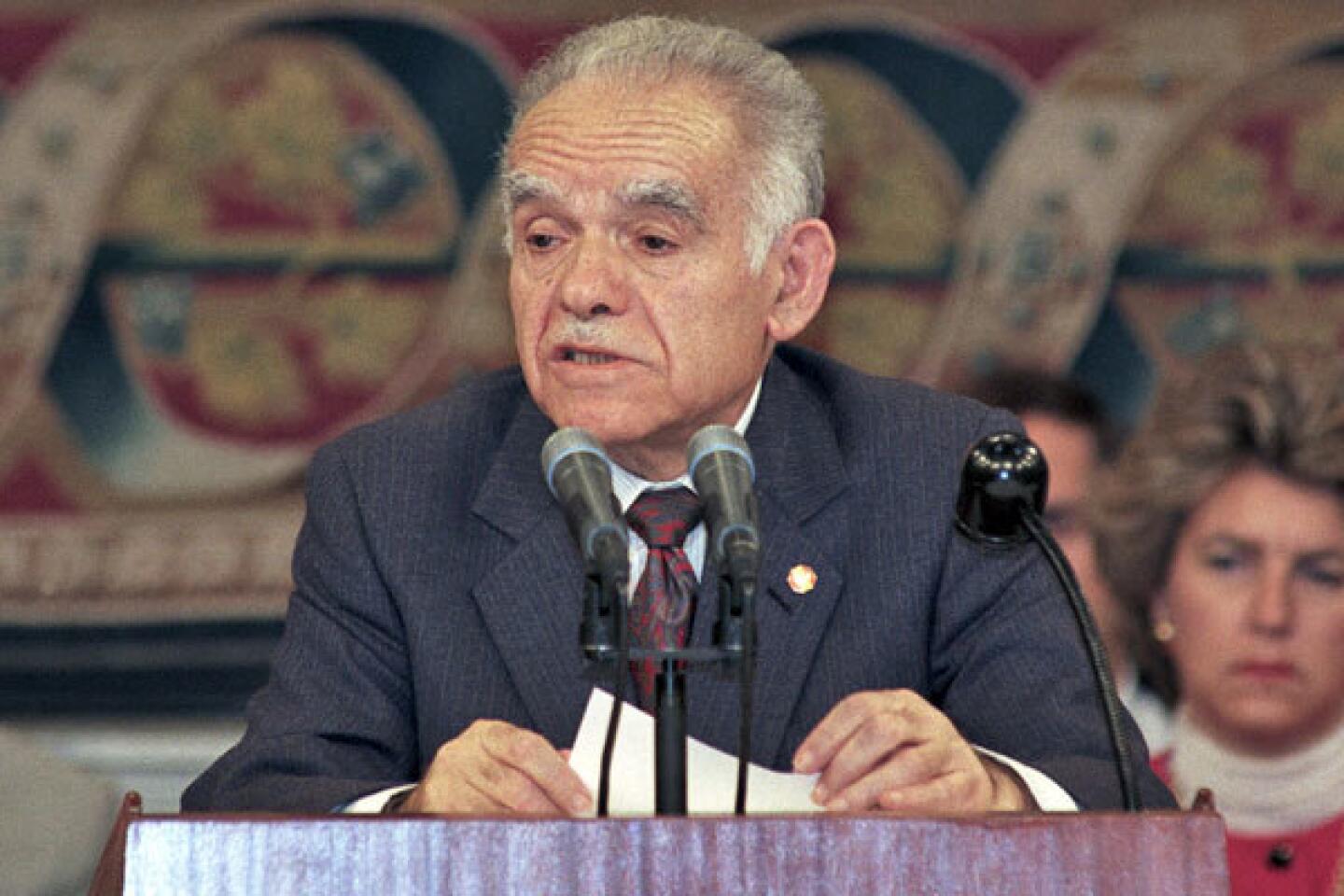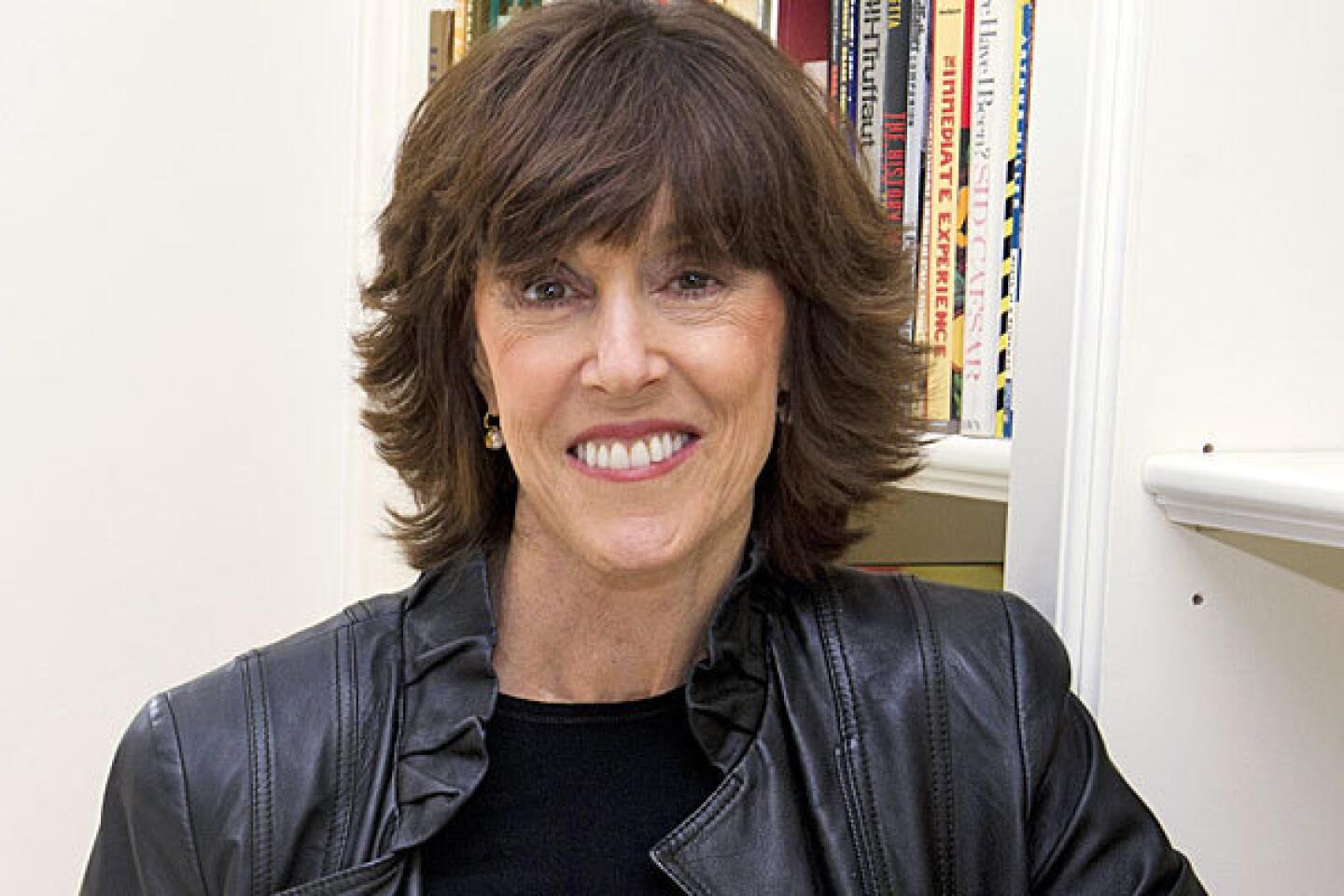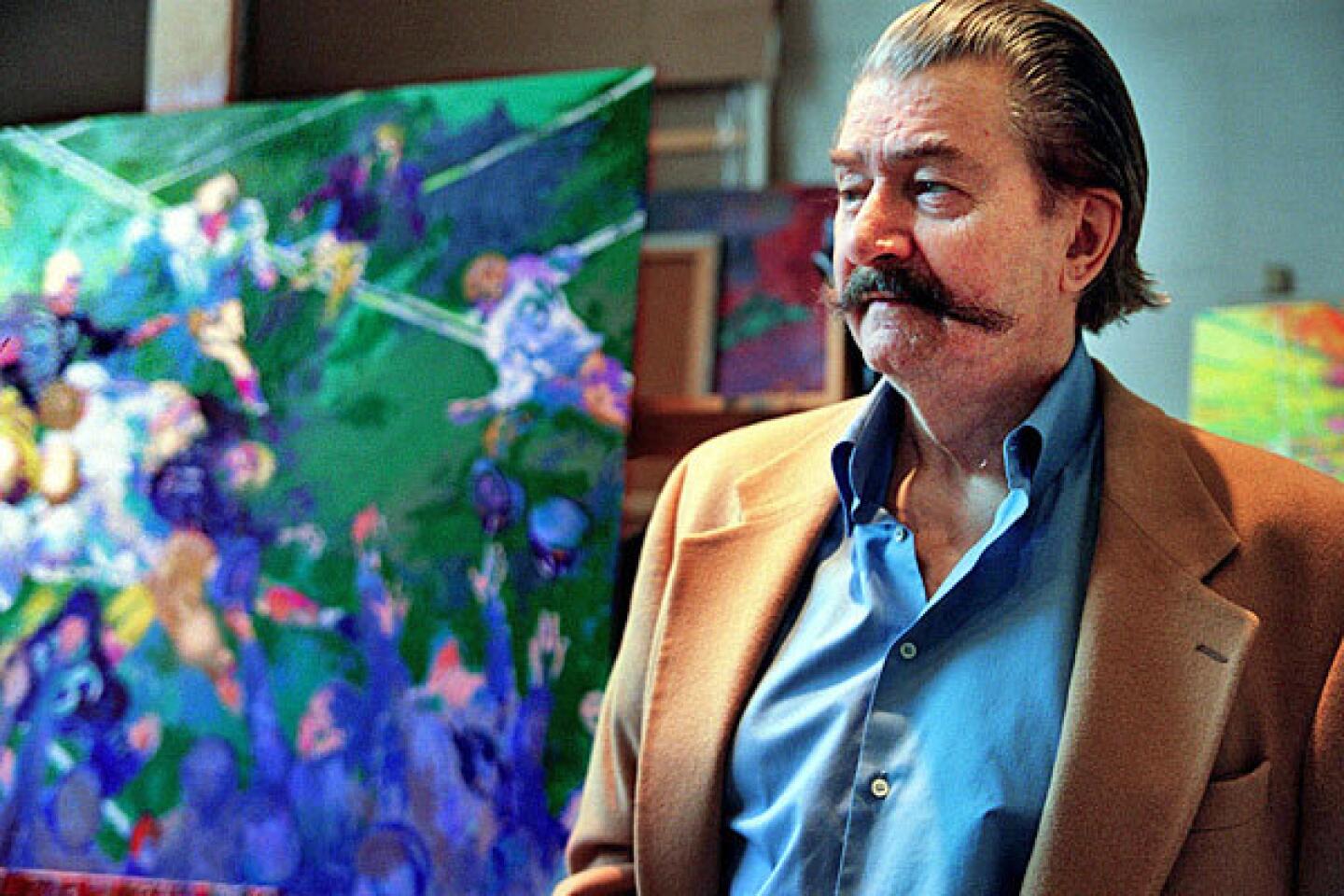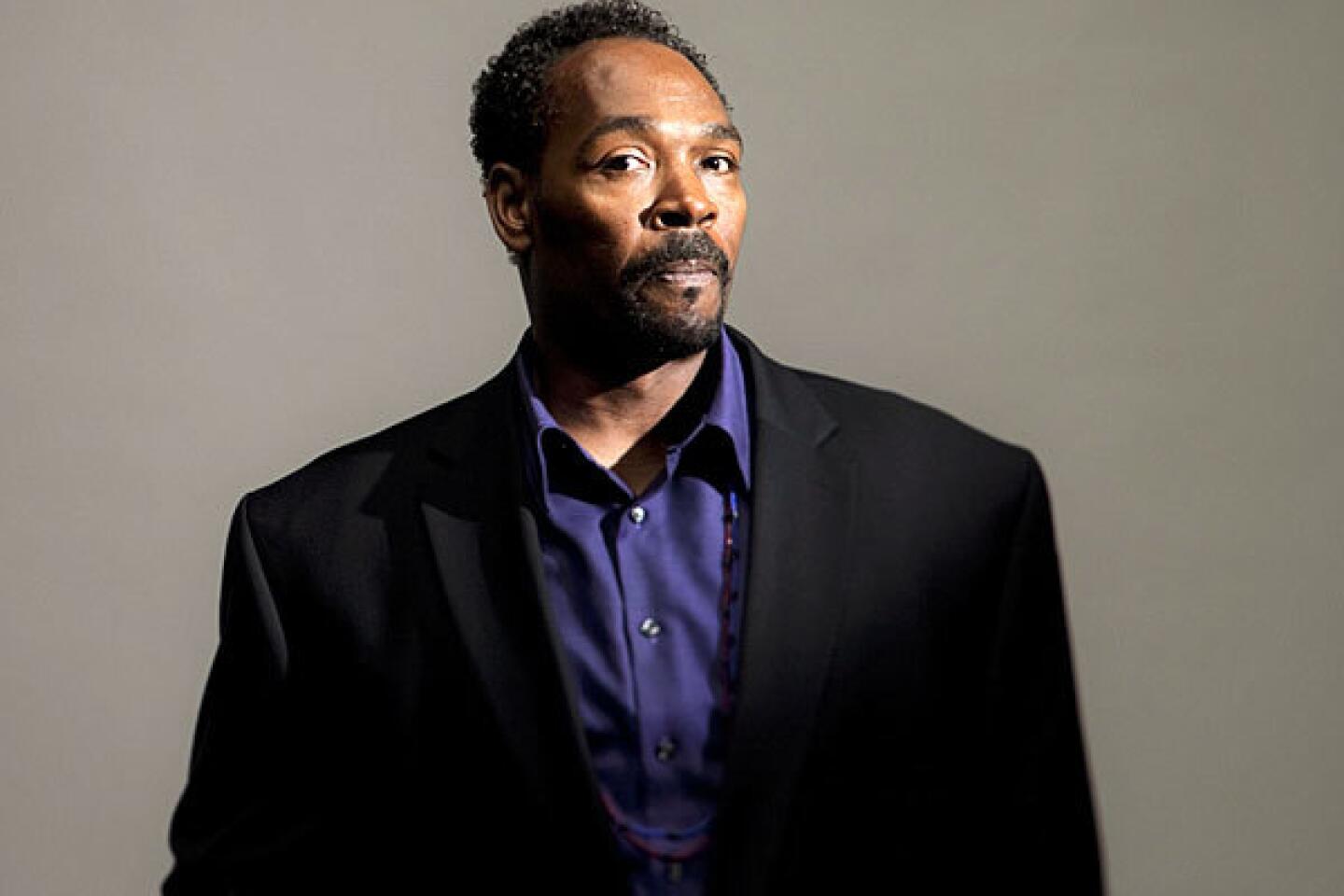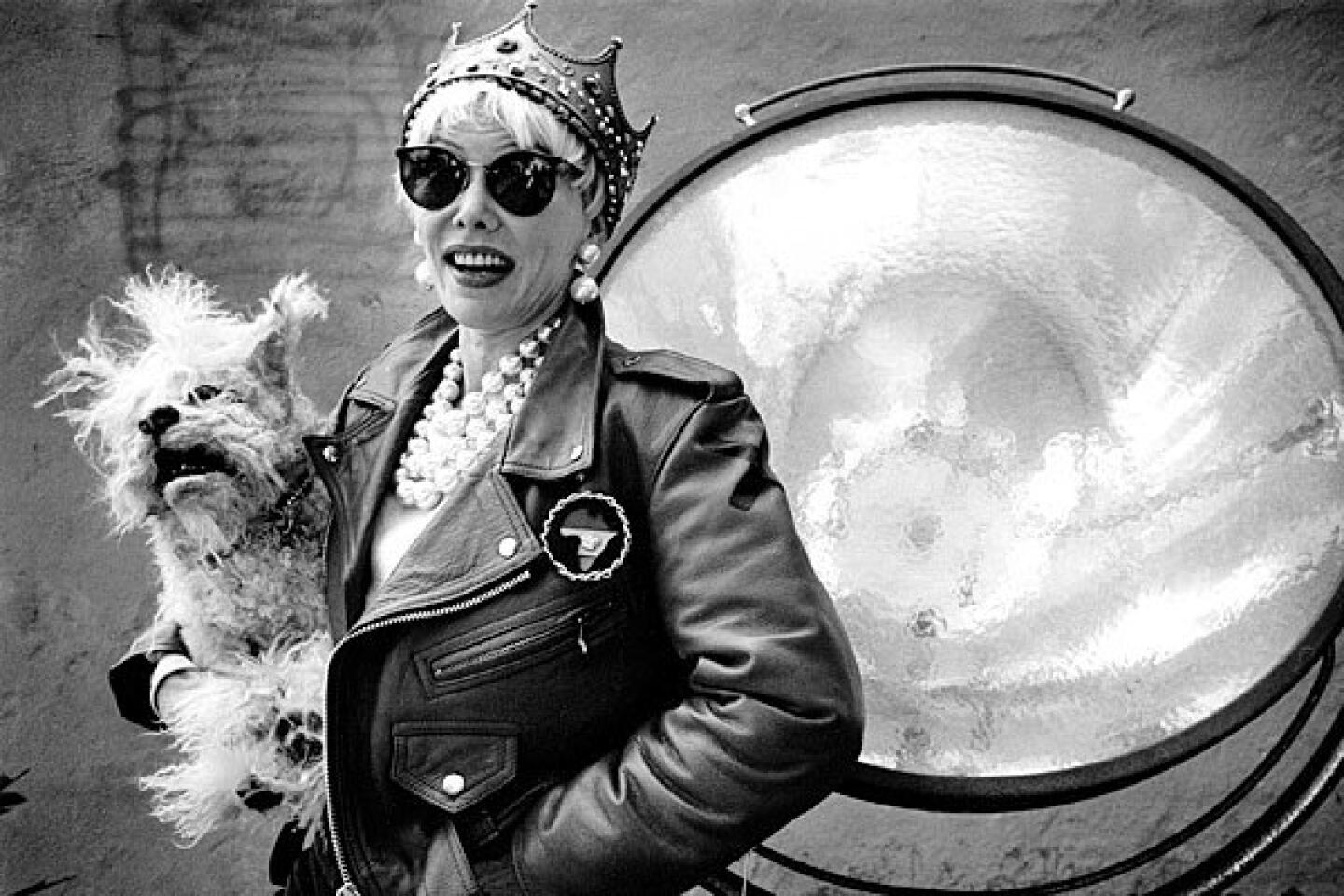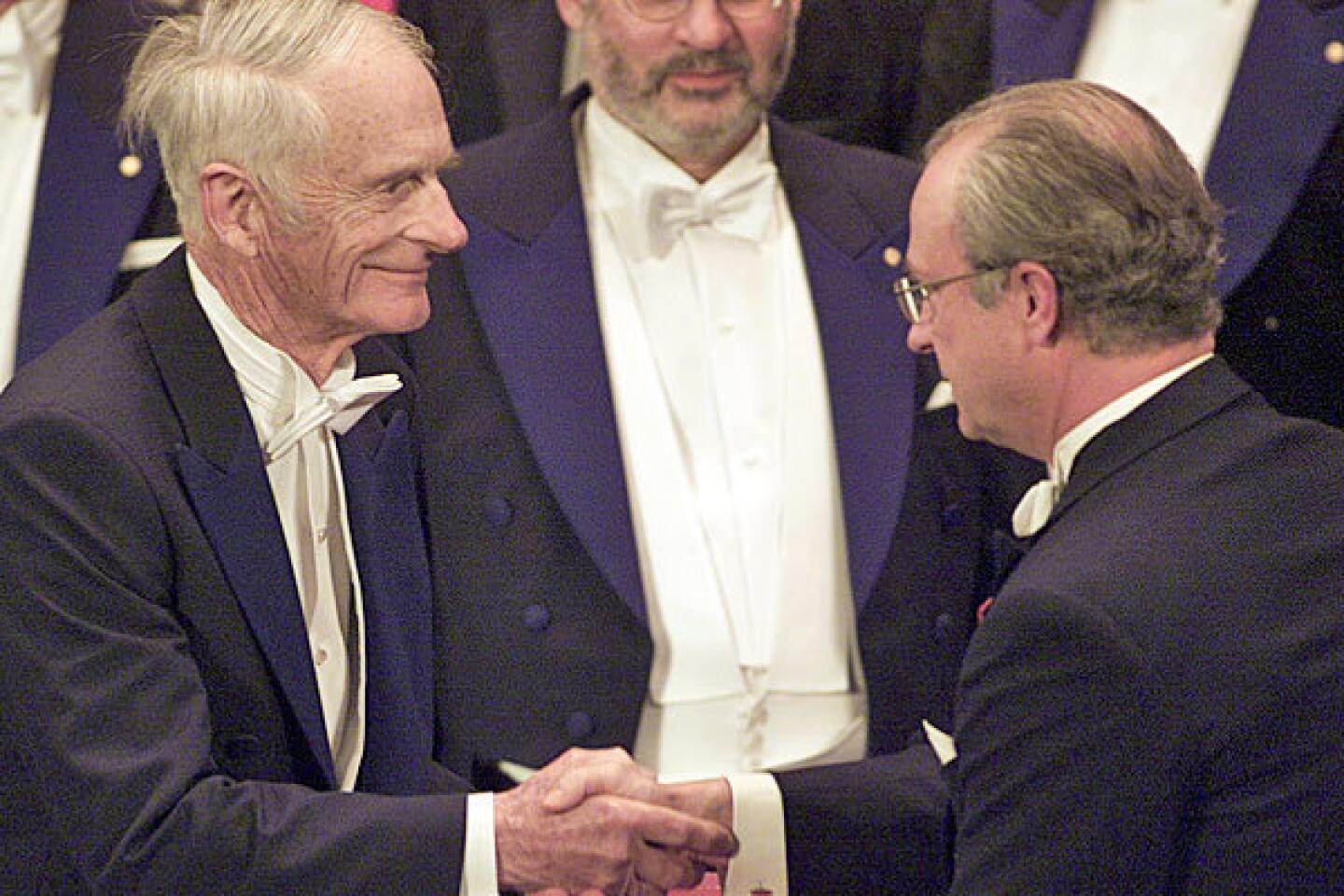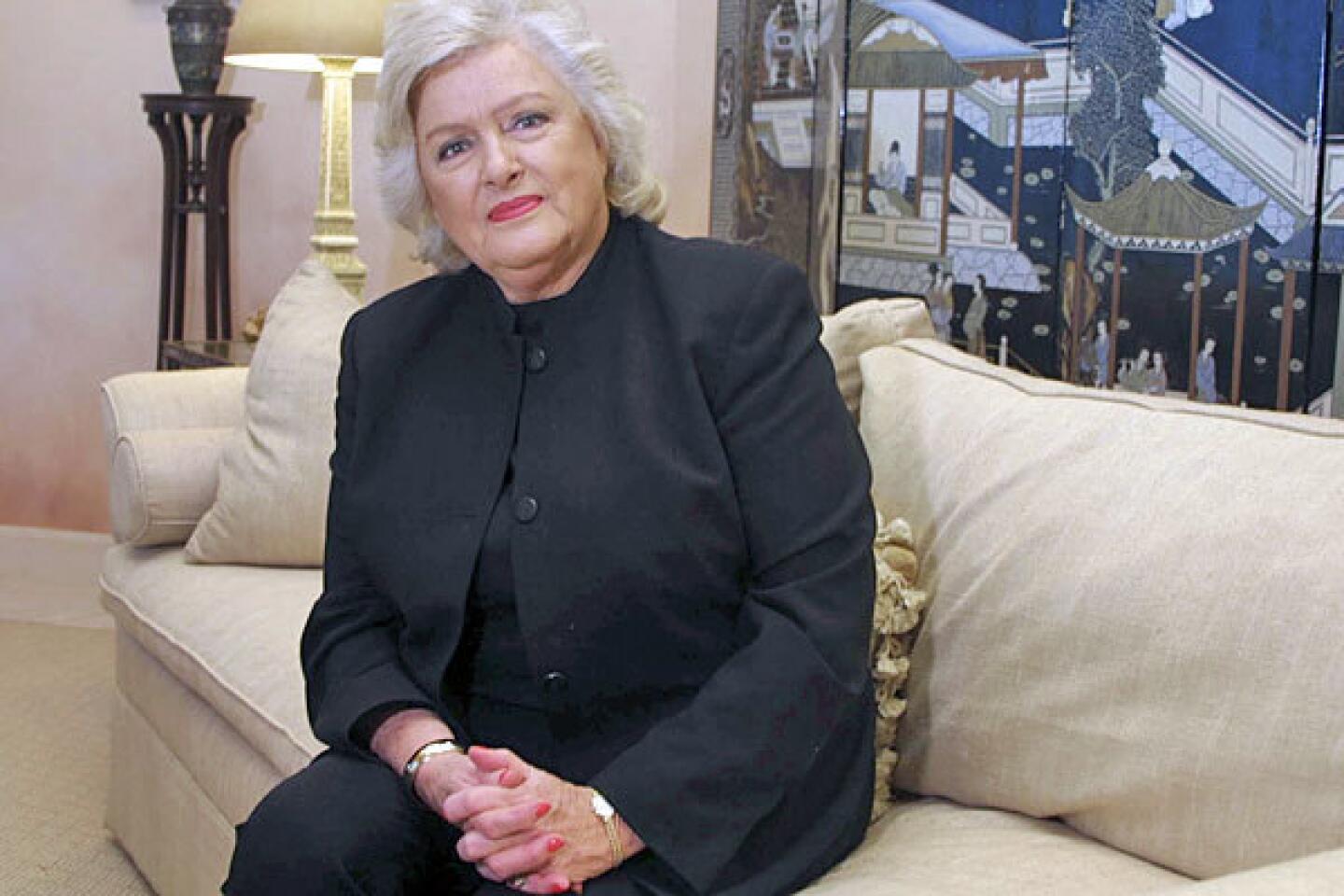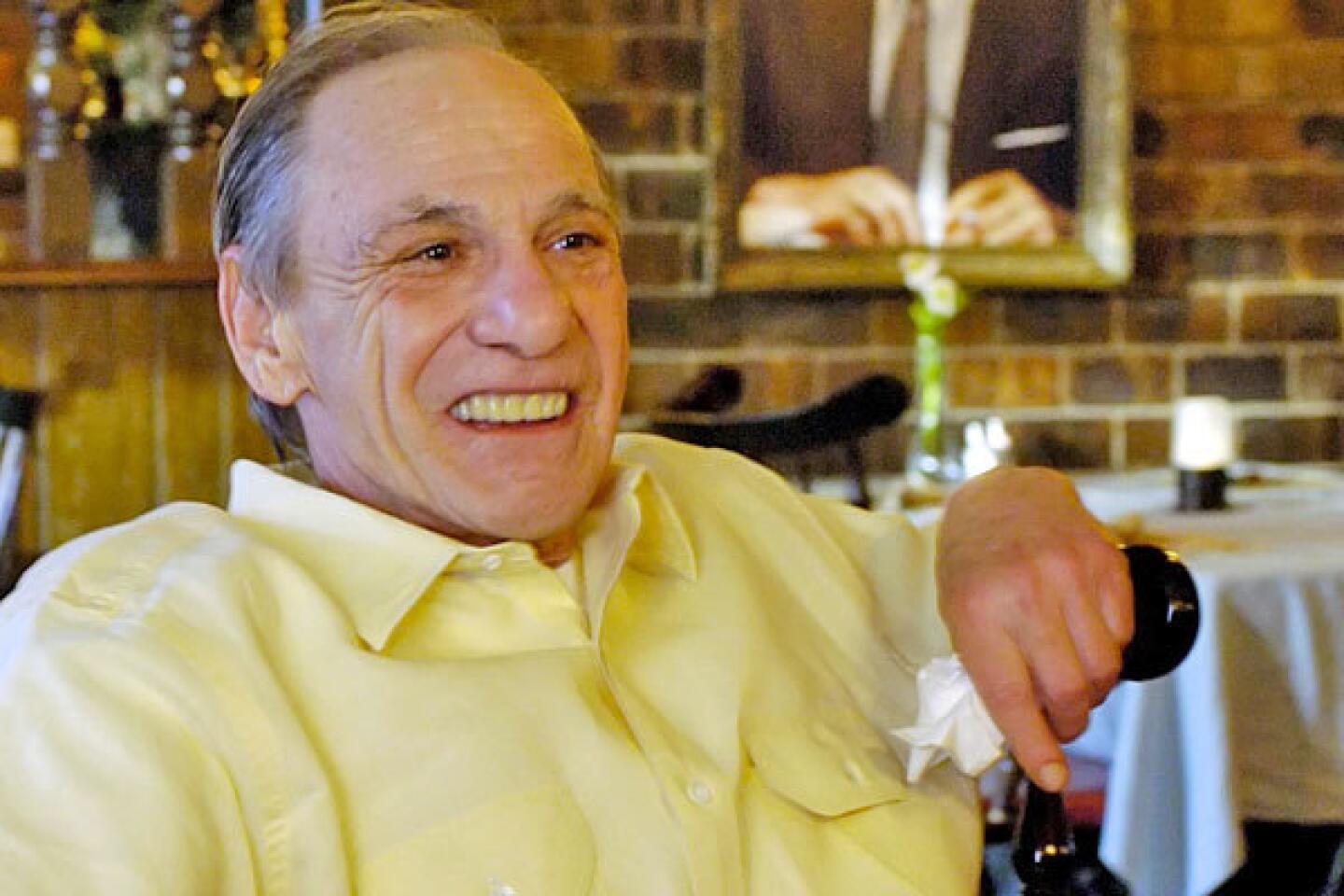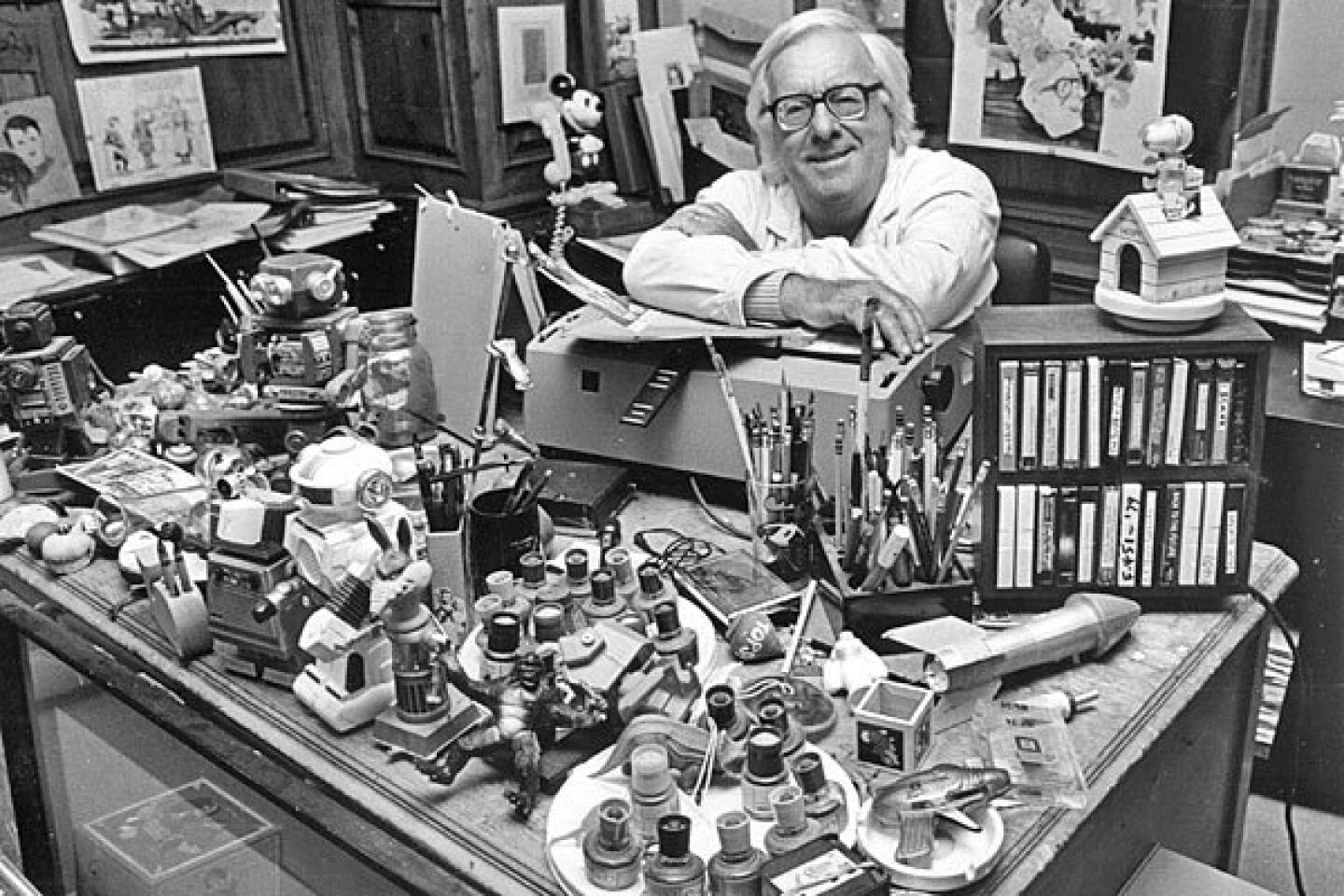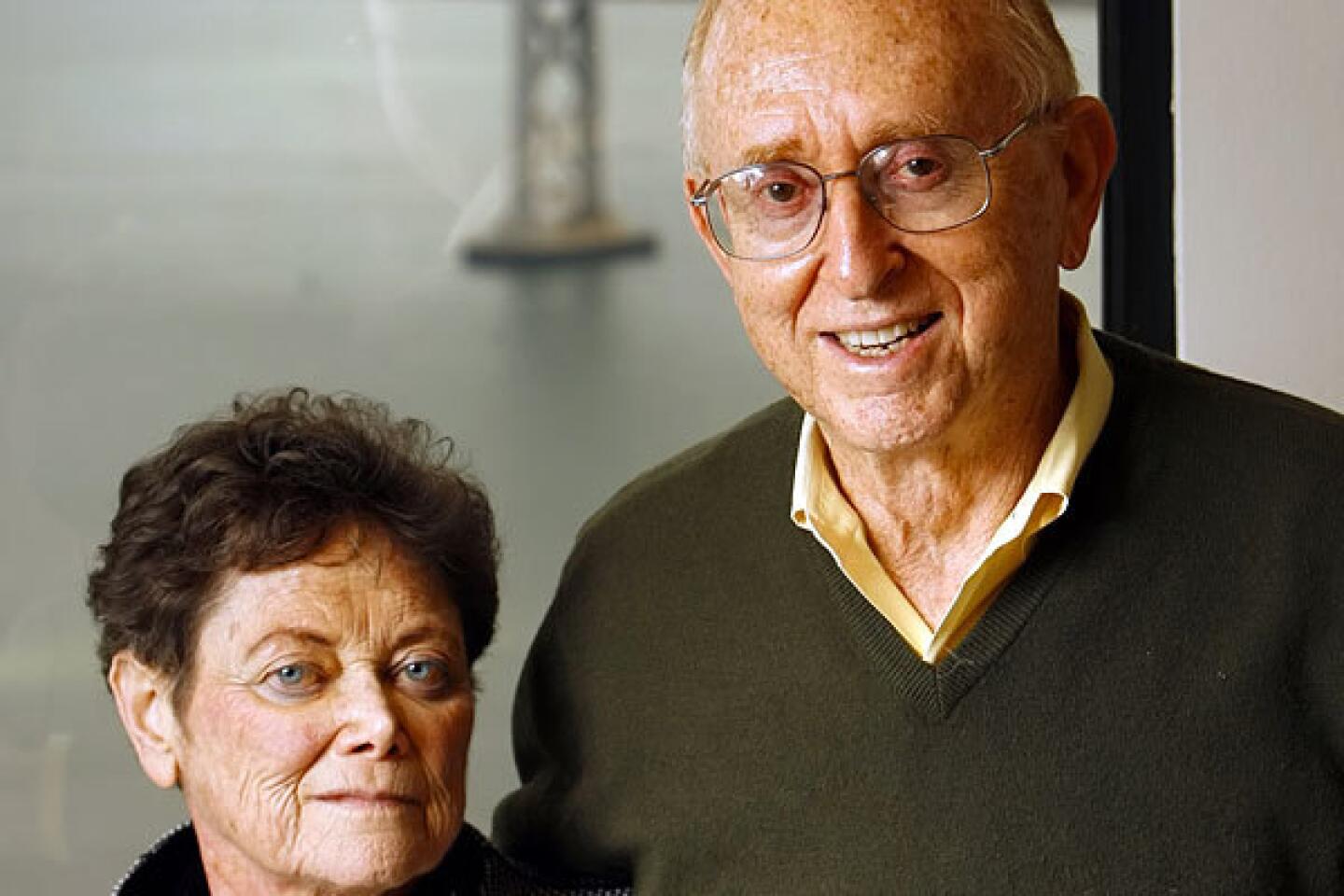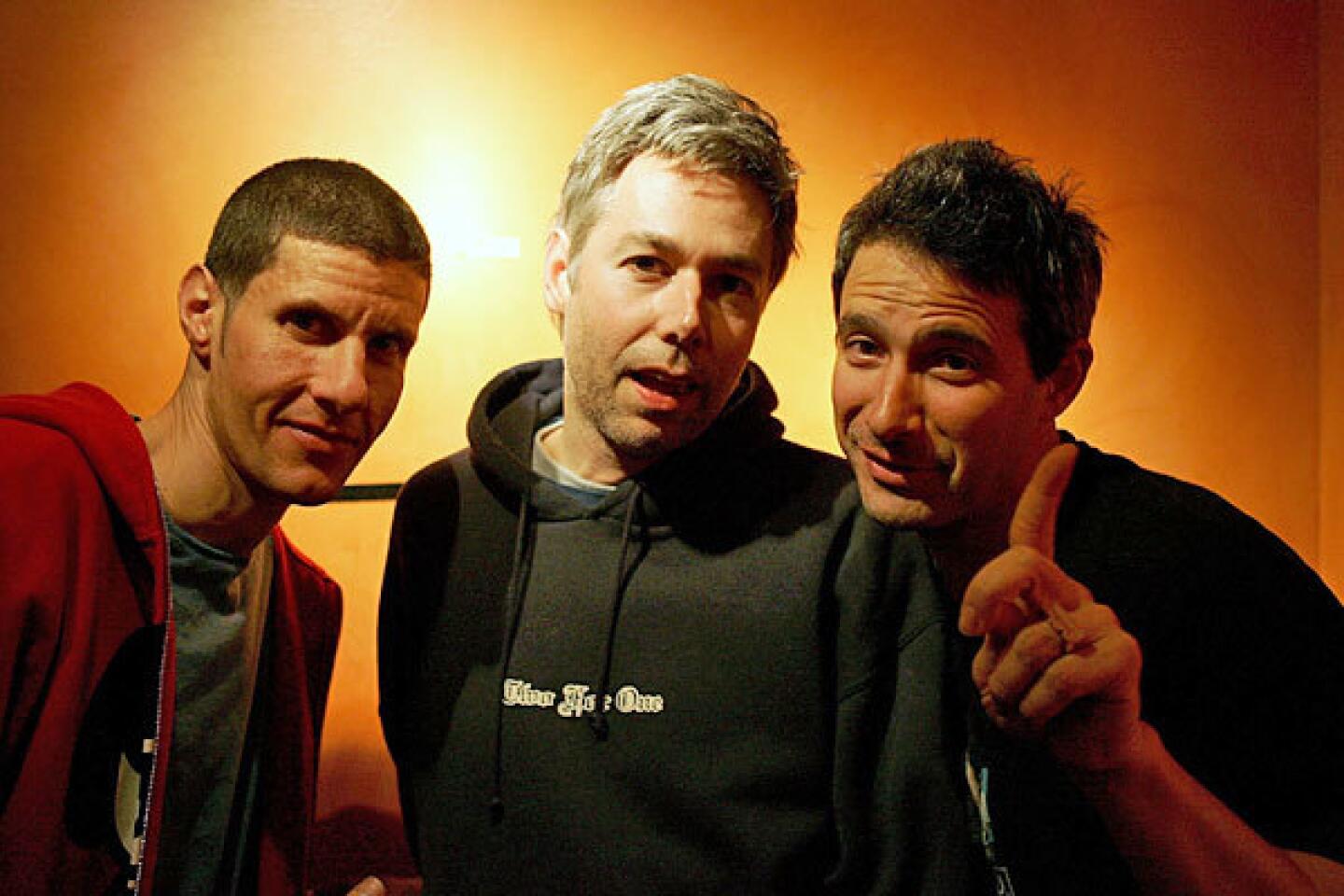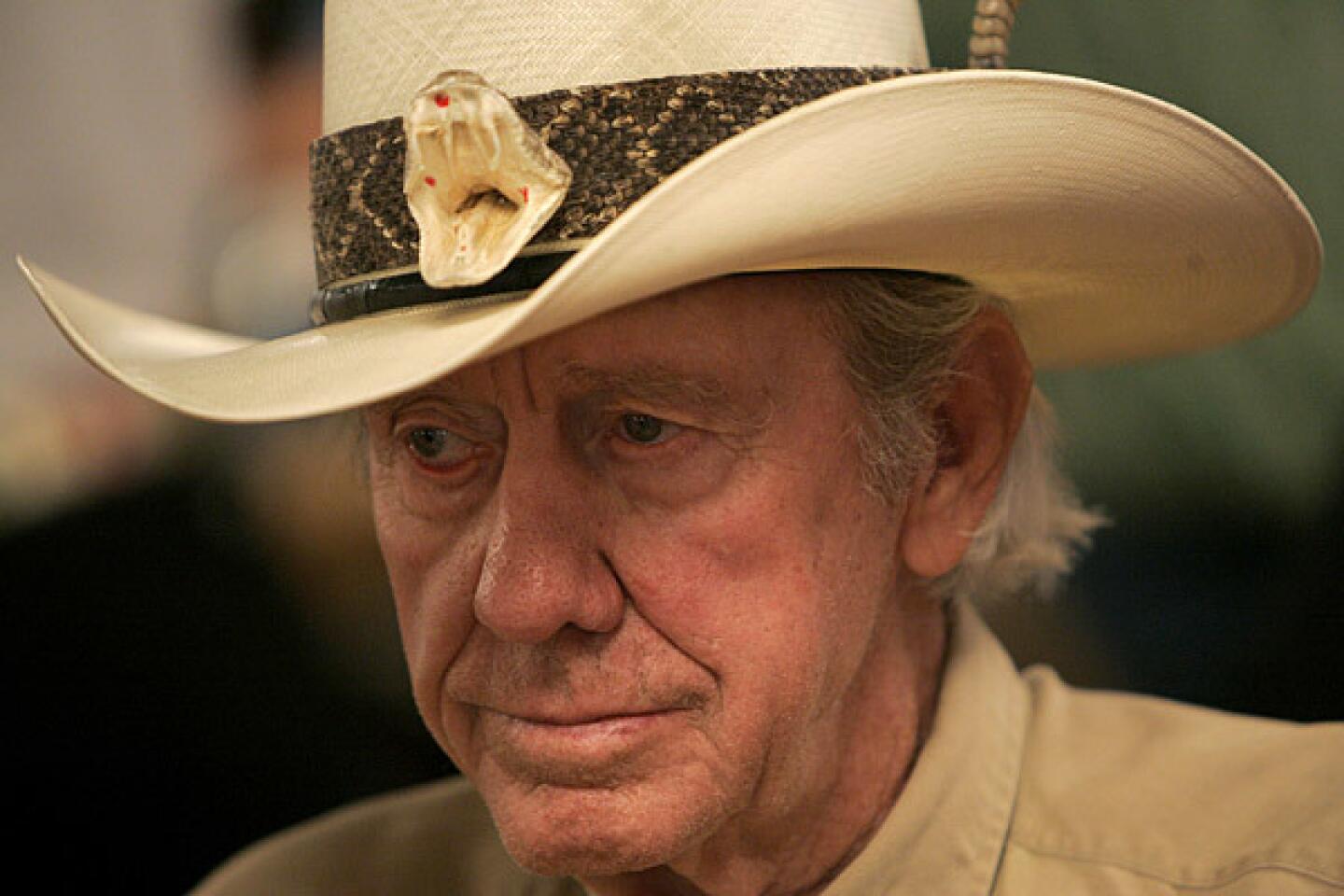Renato Dulbecco dies at 97; 1975 Nobel Prize winner in medicine
Dr. Renato Dulbecco, an Italian American virologist who shared the 1975 Nobel Prize in physiology or medicine for demonstrating how certain types of viruses invade mammalian cells to cause cancer, died of natural causes Sunday at his home in La Jolla. He was 97.
Dulbecco developed a method for measuring the quantity of virus in animal cells in tissue culture, a finding that greatly facilitated the study of such viruses and paved the way for the development of the Sabin polio vaccine. He was a faculty member at Caltech from 1949 to 1963 before moving to the Salk Institute for Biological Studies in La Jolla. He later served as president of the institute.
FOR THE RECORD:
Renato Dulbecco: A news obituary in the Feb. 21 LATExtra section of Nobel Prize-winning virologist Renato Dulbecco misspelled the first name of Italian anatomist Giuseppe Levi as Giuseppi. —
Dulbecco was also one of the first proponents of the human genome project, which many researchers initially thought would be both excessively expensive and relatively useless but which has since proved invaluable in biological research.
“Renato was one of the most brilliant scientific minds of our generation,” current Salk Institute President William R. Brody said in a statement. “His contributions have truly made this a better world for all of us.”
It has been known since the early 1900s that certain viruses can cause tumors in animals. The best-known example was the Rous sarcoma virus, which causes cancer in chickens. But it was not clear how the viruses produced this effect and what proportion of human cancers might be attributed to them.
In experiments carried out at Caltech in the 1950s, Dulbecco showed that a viral infection can have two outcomes: the virus can multiply inside the cell, killing the cell and releasing thousands of new viruses into the host animal; or it could alter the cell so that the cell would continue to divide and grow indefinitely, a process called transformation.
In the latter case, no new virus particles appear and the infecting virus seemingly disappears.
Through an elegant series of experiments, Dulbecco showed that the DNA from the polyoma virus became integrated into the DNA of the host cell, where it was replicated intact every time the cell replicated. Moreover, the viral DNA served as the blueprint for a small number of proteins that subverted cellular machinery, causing the cells to reproduce repeatedly — the hallmark of tumor formation.
Additionally, this feat was achieved before it was possible to sequence the DNA of either viruses or animal cells.
For his achievement, Dulbecco shared the 1975 Nobel Prize with Howard Temin and David Baltimore, who demonstrated the existence of an enzyme — reverse transcriptase — that allowed RNA viruses to integrate their genes into a host cell in the same fashion as the DNA viruses studied by Dulbecco. Both were former students of his.
In his Nobel address, Dulbecco called for increased restrictions on tobacco use because of its carcinogenic potential and urged governments to make greater efforts to limit the introduction of dangerous chemicals.
“While we spend our life asking questions about the nature of cancer and ways to prevent or cure it,” he said, “society merrily produces oncogenic substances and permeates the environment with them.”
Renato Dulbecco was born Feb. 22, 1914, in Catanzaro, Italy, the son of a civil engineer. He enrolled at the University of Turin, where he had meant to study physics and chemistry but soon became interested in biology instead.
He received his medical degree in 1936 and during World War II served in France and Russia, where he was injured in 1942 during a major Russian offensive along the Don River.
After several months of hospitalization, he returned home, hiding out in a small village near Turin when German forces occupied Italy after Mussolini’s fall. He served as a medical officer for partisan forces resisting the occupation.
In medical school, Dulbecco had worked in the laboratory of noted anatomist Giuseppi Levi, along with fellow students Salvador Luria and Rita Levi-Montalcini, both of whom also became Nobel laureates. In 1946, Luria invited Dulbecco to join his small laboratory at the Indiana University and Dulbecco immigrated the following year, becoming a U.S. citizen in 1953. At IU, he shared bench space with James Watson, another eventual Nobel laureate.
Dulbecco was working with bacteriophage, small viruses that invade only bacteria cells. He showed that bacteriophage that had been disabled by exposure to ultraviolet light could be reactivated by exposing them to bursts of white light.
That work attracted the attention of microbiologist Max Delbruck, who invited Dulbecco to join him at Caltech. In the summer of 1949, Dulbecco and his then-wife, the former Giuseppina Salvo, drove an old car cross-country. He wrote in his Nobel autobiography that he was struck by “the beauty and immensity of the U.S.A. and the kindness of its people” and vowed to continue to live here forever.
While at Caltech, Dulbecco adapted a technique he had used with bacteriophage to count the number of virus particles that are present in a tissue sample. Dubbed the plaque assay technique, the assay relies on the fact that viruses added to a culture of cells kill small areas of cells, producing clear circles that can be counted.
This technique enabled researchers for the first time to measure the concentrations of virus in a sample and was crucial to Albert Sabin’s work in inventing an attenuated virus polio vaccine. Dulbecco, in fact, originally isolated the mutant polio virus used by Sabin in his vaccine.
In 1962, Dulbecco became a founding member of the Salk Institute, where he remained for the rest of his career. He also spent time at the Imperial Cancer Fund Research Laboratories in London, where he worked on human cancer viruses, although he remained on the staff at Salk. In his later years, he researched breast cancer and concluded that breast cancer stem cells gone awry might be responsible for certain types of breast tumors.
In 1988, he became interim president at Salk, a position that soon became permanent. He held the post until he returned to his laboratory research in 1992.
During the 1980s, Dulbecco had argued passionately in favor of a human genome project. After his retirement as Salk president he was asked by the Italian National Research Council to develop an Italian human genome project, and he spent about half his time each year in that country. The project was abandoned after five years, however, because of lack of funding and facilities.
Dulbecco was a classically trained pianist who was passionate about music and performed opera. He was also a dedicated do-it-yourself handyman and once told The Times, “If I can get a week off to work on the house, that’s the best vacation I can get.” He remodeled his kitchen and added about 1,000 square feet of space to his home in La Jolla, performing all the work — including plumbing and electrical — himself.
Dulbecco is survived by his second wife, Maureen, whom he married in 1962; a brother, two daughters and four grandchildren. A son predeceased him.
Maugh is a former Los Angeles Times staff writer.


